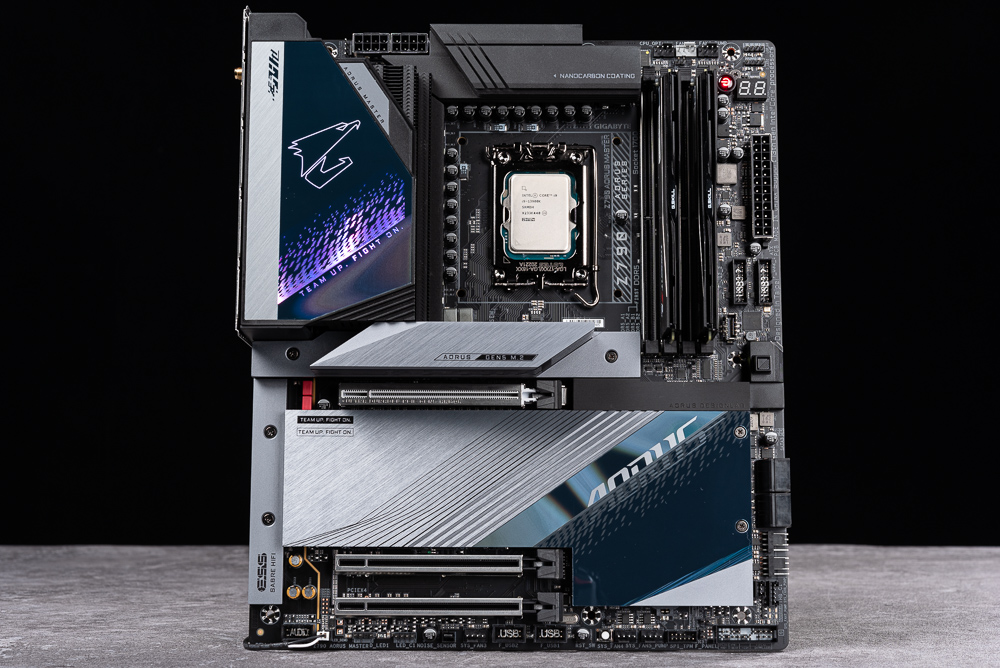
The 13th generation Intel Core i9-13900K once again dominates the double crown of multi-core and gaming performance, and on the same LGA 1700 pin, a new generation of Z790 motherboards is launched, and the GIGABYTE “Z790 AORUS MASTER” motherboard is refurbished and upgraded. PCIe 5.0 graphics card and SSD dual support, plus 20-phase 105A power supply, 8-layer version, 5 M.2, 10GbE, 3 USB 20Gbps expansion capabilities, the gaming Condor is still powerful, flagship specifications, and ultimate heat dissipation.
Specifications
Dimensions: E-ATX (30.5cm x 25.9cm)
Processor Support: 12th, 13th Generation Intel Core, Pentium Gold and Celeron
Processor Pin: Intel LGA 1700
CPU Power Phase: 20 +1+2 Phase 105A Power Stage , 8-layer PCB
Chipset: Intel Z790
BIOS: 1 x 256Mb ROM, UEFI AMI
Memory: 4 x DIMM, MAX 128GB, DDR5 8000+(OC)/4800 MHz
Display Output: 1 x DisplayPort 1.2 HDCP 2.3
Expansion Slots: 1 x PCIe 5.0 x16, 1 x PCIe 3.0 x16(x4), 1 x PCIe 3.0 x16(x1)
Storage Ports: 4 x SATA 6Gb/s, M2A_CPU PCIe 4.0 x4, M2C_CPU PCIe 5.0 x4, M2P_SB, M2Q_SB PCIe 4.0 x4, M2M_SB PCIe 4.0 x4/SATA
Network: Marvell AQtion AQC113C 10GbE LAN
Wireless: Intel Killer Wi-Fi 6E AX1690 / BT5.3
Audio: Realtek ALC1220-VB, ESS ES9118 DAC
USB Ports: 3 x USB 3.2 Gen 2×2 Type C (1 front expansion), 1 x USB 3.2 Gen 1 Type C, 7 x USB 3.2 Gen 2, 8 x USB 3.2 Gen 1 (4 expansion), 4 x USB 2.0 (4 expansion) Expansion required)
RGB: 2 x ARGB 4-1pin, 2 x RGB 4pin
FAN: 1 x 4-pin CPU, 1 x 4-pin Water Cooling, 4 x SYS, 4 x SYS/PUMP
GIGABYTE Z790 AORUS MASTER OUT OF BOX/E -ATX power supply +1 phase, PCIe 5.0 fully supports
Intel is accustomed to the support of two generations of CPUs with one pin, so the 12th and 13th generation processors use LGA 1700 pins, players can freely match Intel 600, 700 series motherboards, and Under the condition that the I/O specifications have not changed, the new Z790 motherboard is mainly the functional modification or small upgrade made by various board manufacturers for the previous generation Z690. For your reference.
The new-generation Z790 AORUS MASTER is replaced with a heat dissipation armor and design similar to the X670E. This generation mainly supports PCIe 5.0 x16 graphics cards and PCIe 5.0 x4 SSDs. In addition to the maximum capacity of 128GB of 4 DIMM DDR5 memory, the official also indicates that it has a higher capacity. High DDR5 8000MHz memory overclocking is possible.
The PCIe expansion slots are 1 PCIe 5.0 x16 and 1 PCIe 3.0 x4 and x1 slots, but the PCIe 5.0 x4 channel used by the M2C_CPU of the motherboard is shared with the PCIe 5.0 x16, that is, when the M2C_CPU is installed with PCIe 5.0/4.0 For x4 SSD, the first PCIe slot will be sliced to PCIe 5.0 x8 bandwidth.
| PCIE | PCIe Line Sharing |
| PCIEX16 | M2C_CPU |
| PCIe 5.0 x16 | Do not use |
| PCIe 5.0 x8 | Install PCIe 5.0/4.0 x4 SSD |
In terms of storage, the number of SATA has been reduced to 4, but the expansion capability of 5 M.2 is maintained, including M2A_CPU PCIe 4.0 x4, M2C_CPU PCIe 5.0 x4, and M2P_SB and M2Q_SB both support PCIe 4.0 x4 channels, and finally, M2M_SB supports both PCIe 4.0 x4/SATA channels SSD installation.
The network is a direct attack on Marvell AQtion AQC113C 10GbE LAN with Intel Killer Wi-Fi 6E AX1690 / BT5.3 wireless network card; audio is a combination of Realtek ALC1220-VB audio chip and ESS ES9118 DAC; USB provides 3 USB 3.2 Gen 2×2 Type C and a total of up to 23 USB ports available.
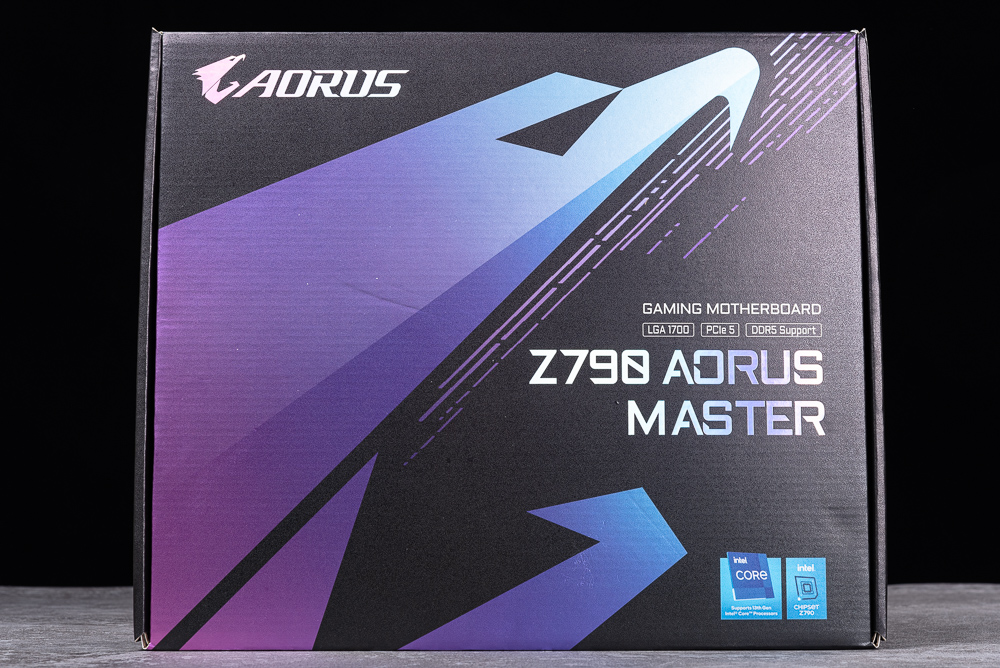
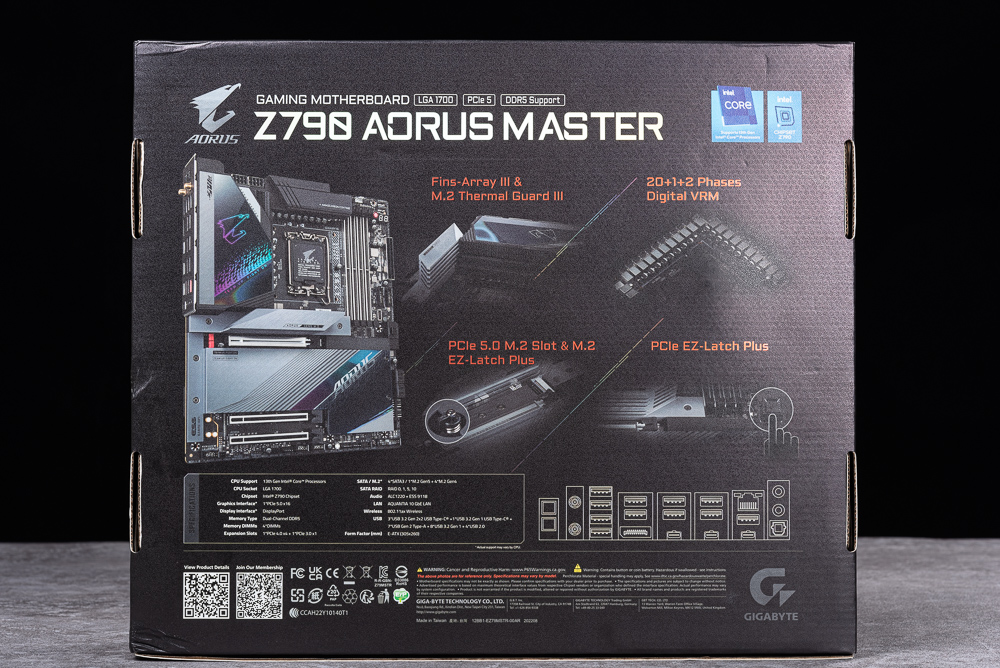
This generation of Z790 AORUS MASTER motherboard adopts E-ATX size, with silver-gray heat sink and hairline styling lines. PCIe 5.0 x4 SSD and the raised first M.2 heat sink are also quite domineering. Similarly, the back of the motherboard has a metal back plate, which can increase the passive cooling effect for the rear of the VRM and PCH chips.
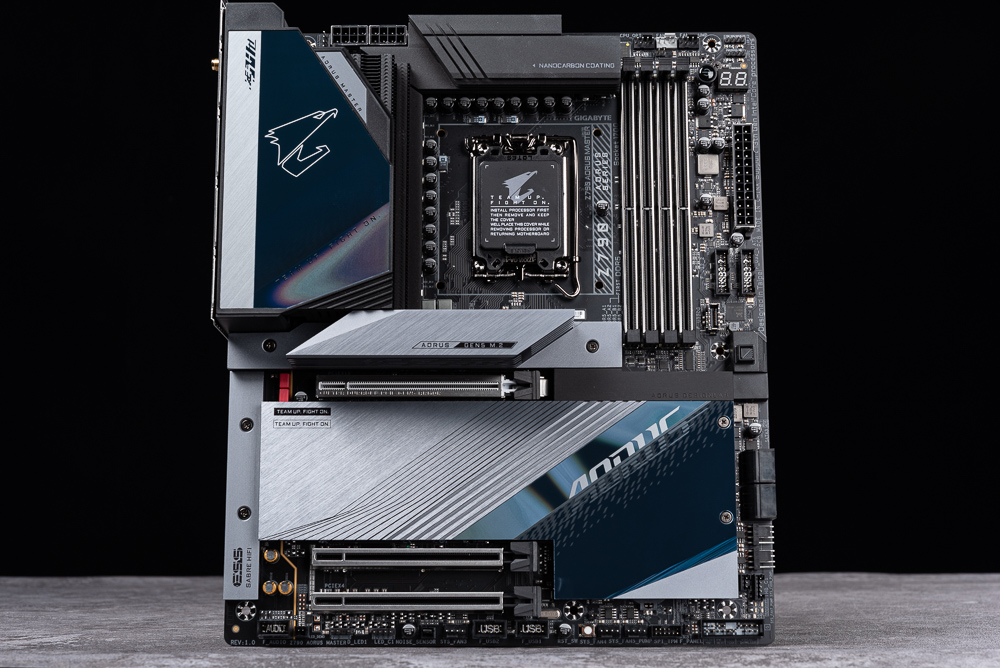
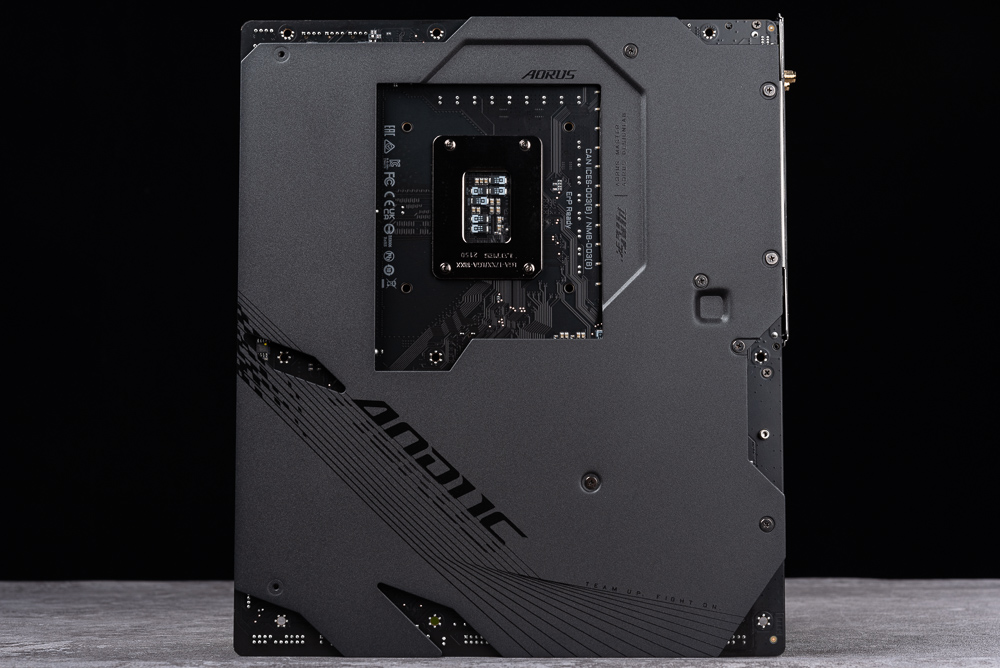
The motherboard’s 4 DIMM DDR5 memory sockets have enhanced metal armor and can support higher DDR5 overclocking clocks. It also supports the overclocking memory parameters of XMP and EXPO.
In addition, the ATX 24-pin socket of the motherboard is also strengthened with a metal shell. This area also has a front USB 3.2 Gen 2×2 Type C, USB 3.2 Gen1 port, CPU FAN, CPU OPT, SYS FAN, RGB pins, and Debug Code. and other functions.
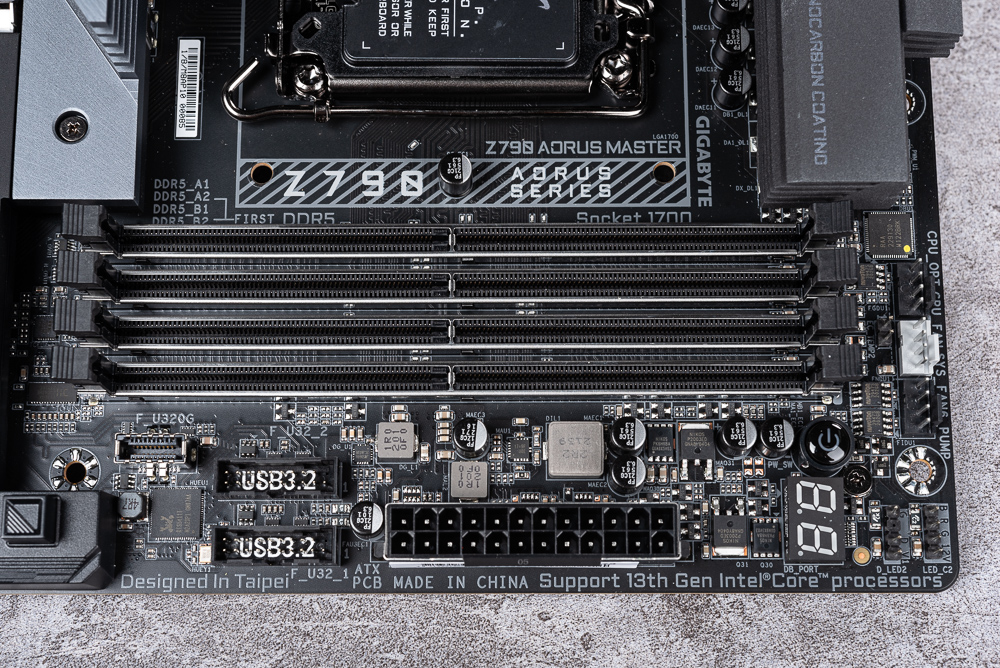
Intel LGA 1700 pins support both 12th and 13th-generation Intel Core processors; around the CPU are GIGABYTE’s unique blackened Fins-Array stacked cooling fins, while the left fin extends below the I/O housing, to ensure that the CPU has a stable power supply under high load and has a sufficient passive cooling effect.
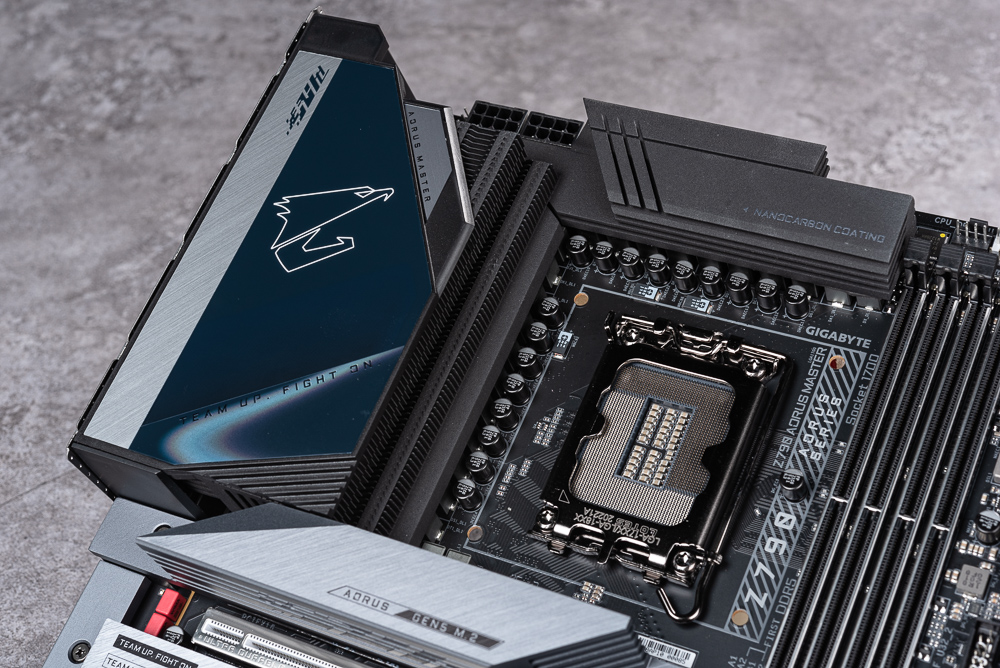
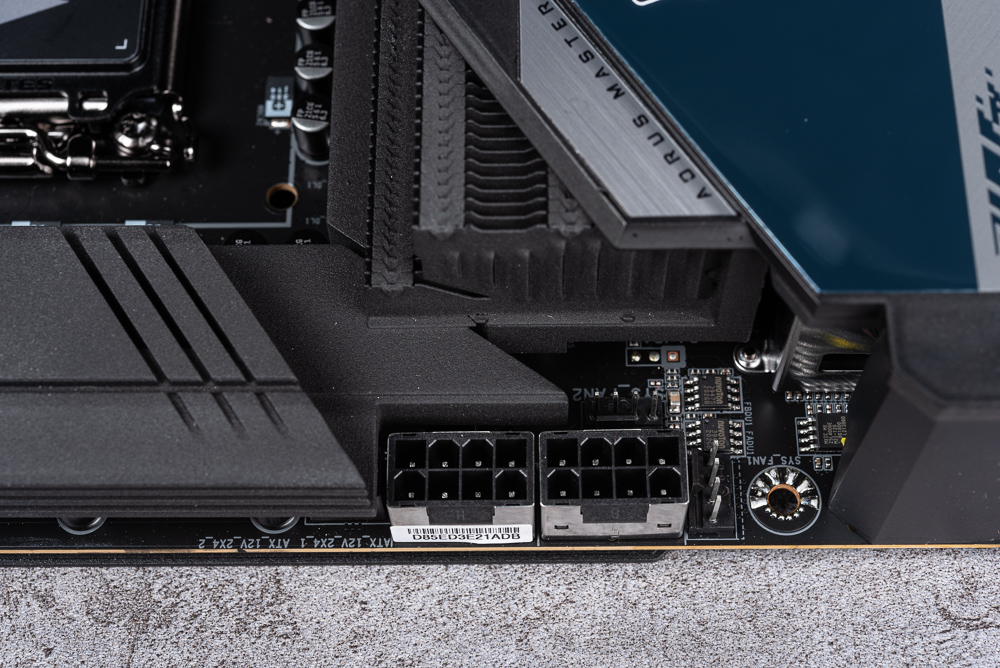
There is a “PCIe EZ-Latch” square button in the middle of the right side of the motherboard. After pressing it, the buckle of the first PCIe slot can be released, so that you don’t have to worry that your fingers cannot press the buckle when removing and installing high-end graphics cards. Unable to remove the graphics card.
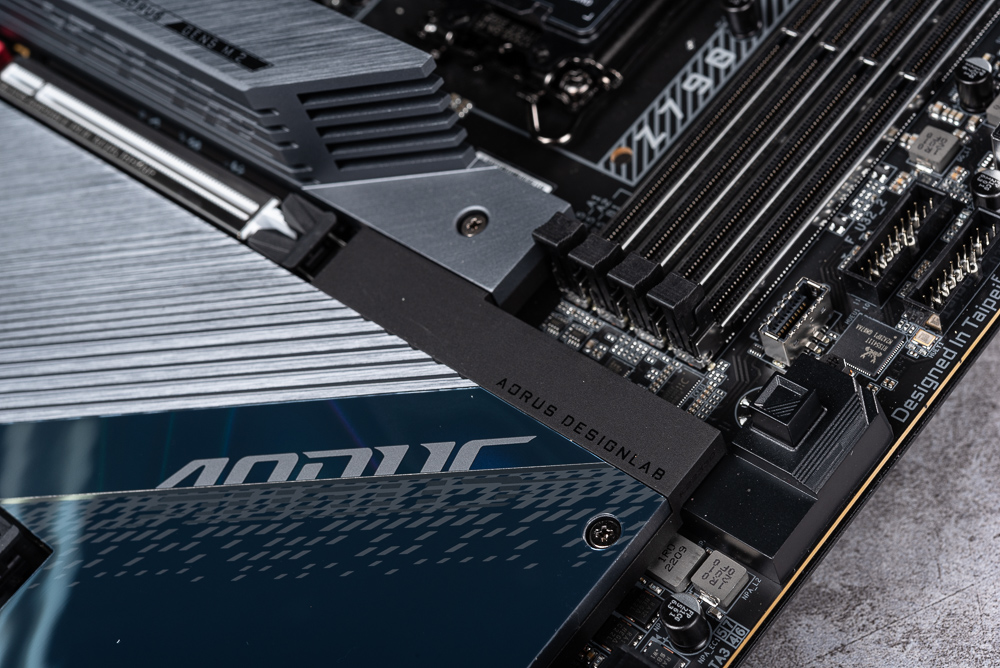
The right edge of the motherboard has 4 SATA ports and 2 horizontal FAN sockets. The reason for this SATA reduction is that Z690 uses channel splitting to maintain 6 SATA ports and M2M_SB supports SATA SSD specifications, while this generation directly allows M2M_SB to use SATA channels without splitting, so there is only one left. The next 4 SATA ports.
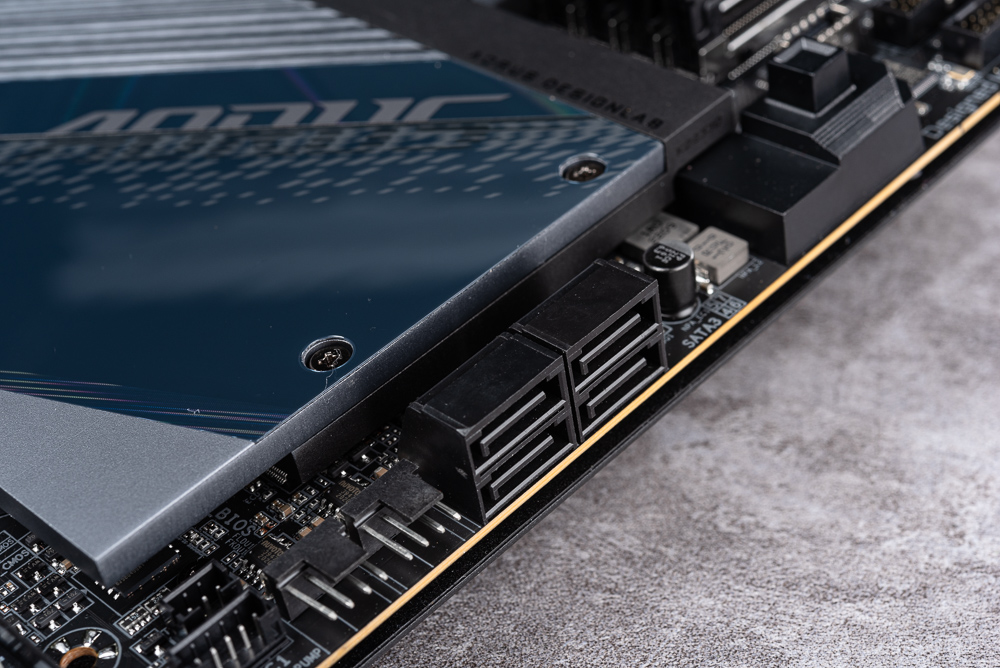
The first M.2 adopts PCIe 5.0 x16 splitting of CPU channels and supports M.2 PCIe 5.0 x4 SSD, so the first M.2 heat sink is also much higher and has multiple fins cutting to increase passive heat radiation.
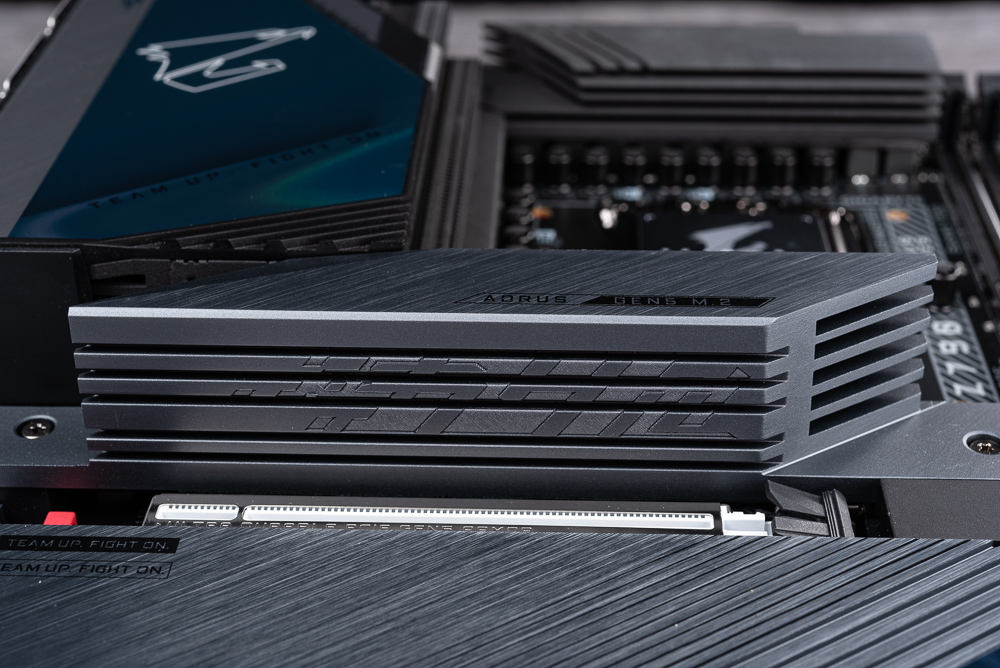
The first PCIe 5.0 x16 slot on the motherboard is a white slot with metal armor reinforcement, followed by an M.2 heat sink, and finally, there are PCIe 3.0 x4 and PCIe 3.0 x1 expansion slots.
The sockets from left to right on the edge of the motherboard are the front audio source, ARGB, RGB, SYN FAN, USB 2.0, SYS FAN, SPI, and front panel pins.
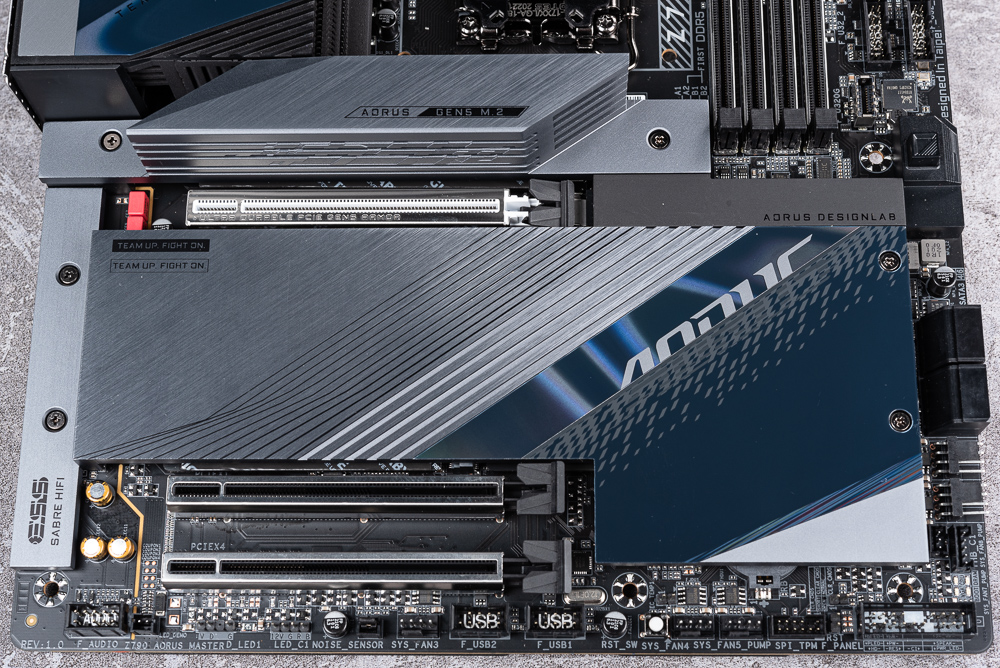
In addition to the heat sink and thermal pad on the front of the motherboard M.2, the bottom has the same design of heat sink and thermal pad, and the first M2C_CPU from the left in the picture below uses the PCIe 5.0 x4 channel cut by the CPU, and the second M2A_CPU The CPU’s native PCIe 4.0 x4 channel is used, then M2P_SB and M2Q_SB of the chipset support PCIe 4.0 x4 channel, and finally M2M_SB supports PCIe 4.0 x4/SATA channel.
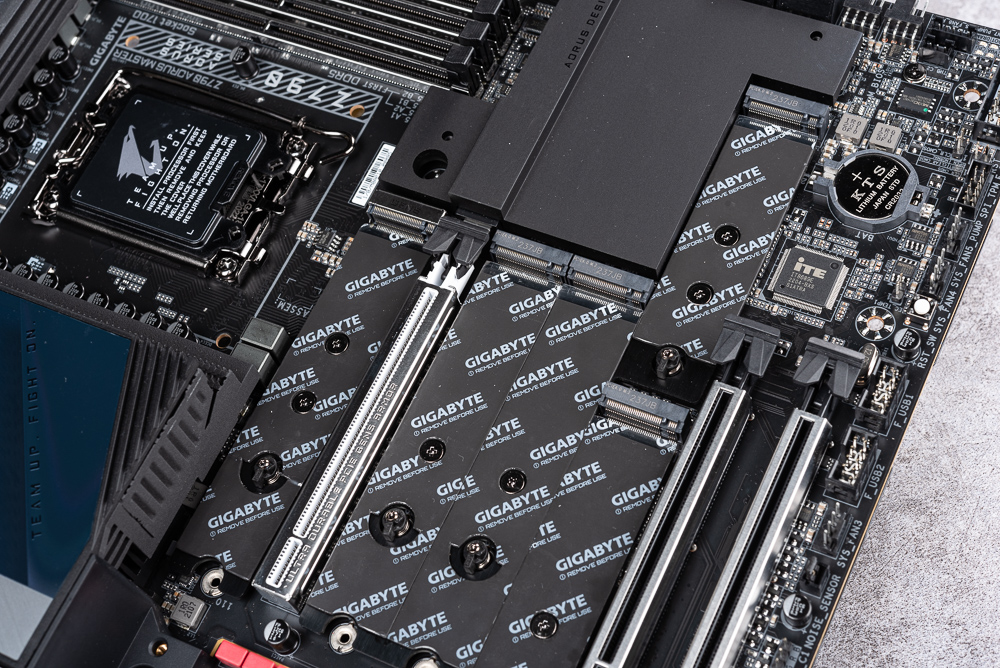
In addition, GIGABYTE has fully upgraded the M.2 EZ-Latch Plus. The fixing screws of each M.2 SSD are replaced with “elastic buckles”. When installing, just turn the buckle up half a turn and press the M.2 SSD down. Release the buckle, and the elastic force of the buckle will automatically buckle the M.2 SSD so that it is more convenient to install the M.2 SSD.
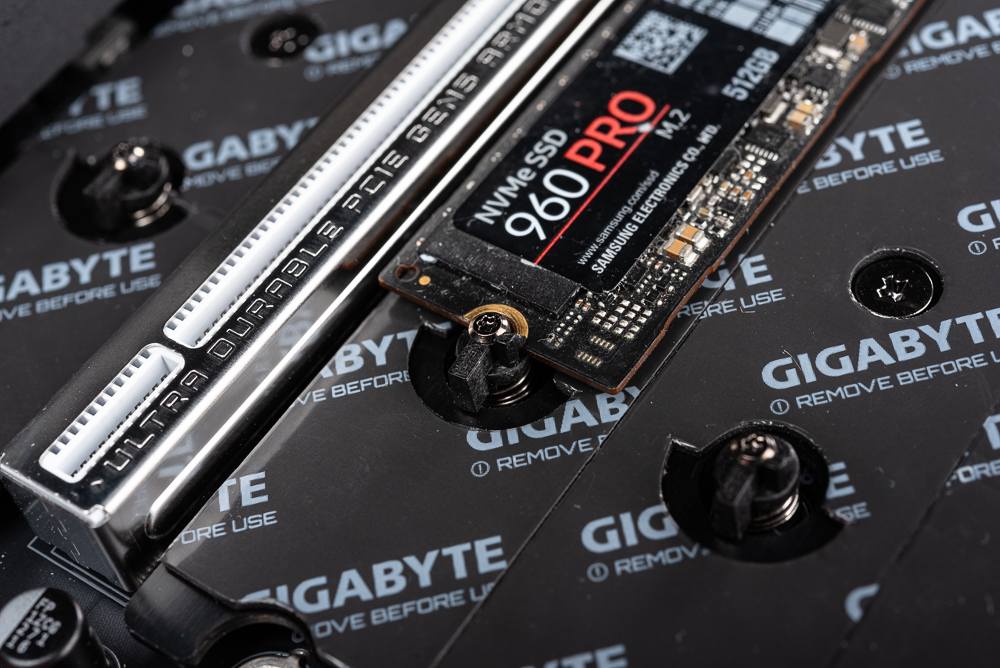
The motherboard adopts an integrated rear I/O baffle, and the rear I/O of the motherboard provides Q-FLASH PLUS, Clear CMOS button, antenna, DP internal display output, and 7 USB 3.2 Gen 2, 5 USB 3.2 Gen 1, 2x USB 3.2 Gen 2×2 Type C, and 10GbE RJ-45 port and 3.5mm / SPDIF audio output.
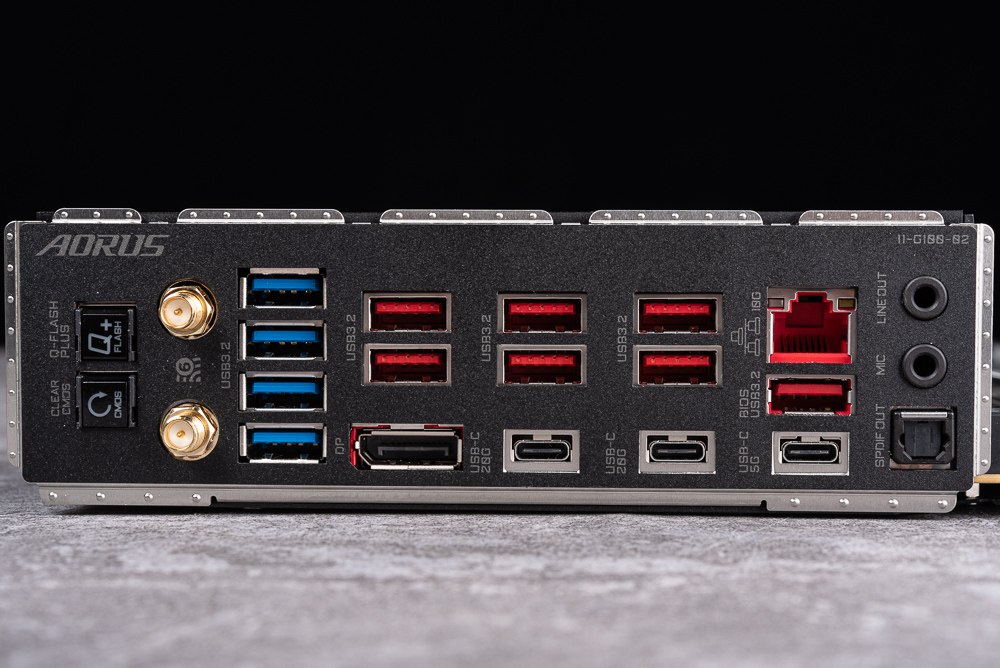
GIGABYTE Z790 AORUS MASTER motherboard material / 20+1+2 phase 105A, 5 x M.2, 10GbE
Z790 AORUS MASTER still gives players the latest PC specifications, with DDR5, PCIe 5.0 x16, 5 M.2, 4 SATA, 10GbE, and multi-USB expandability, and under the metal armor, there are also many components and small design details. Here, I will disassemble the motherboard to share with you.
When removing the metal backplane, it also replaces the backside of the VRM and 10GbE network chips for passive heat dissipation.
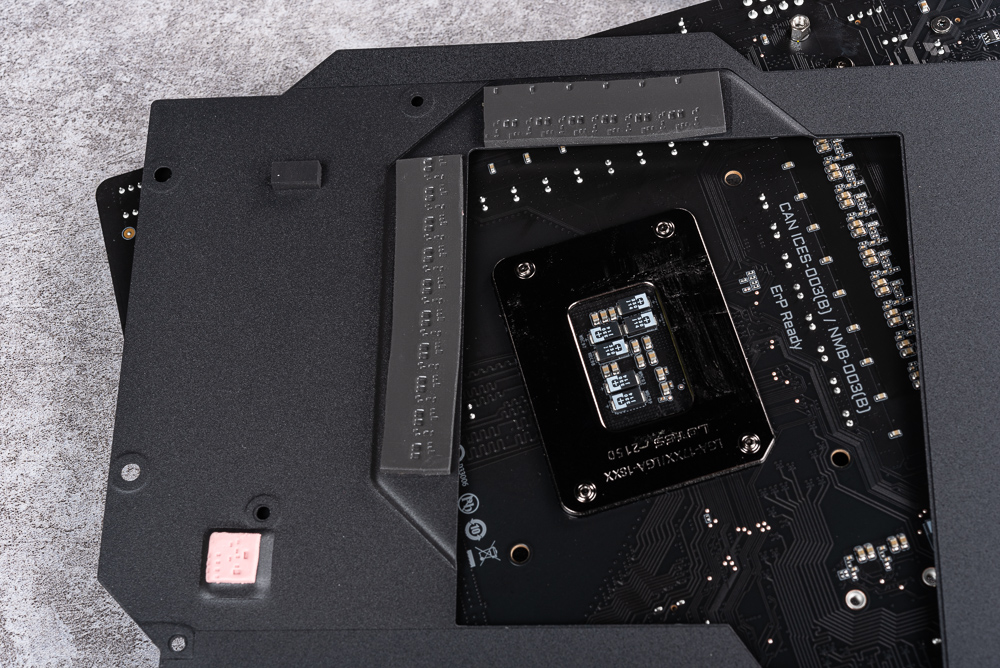
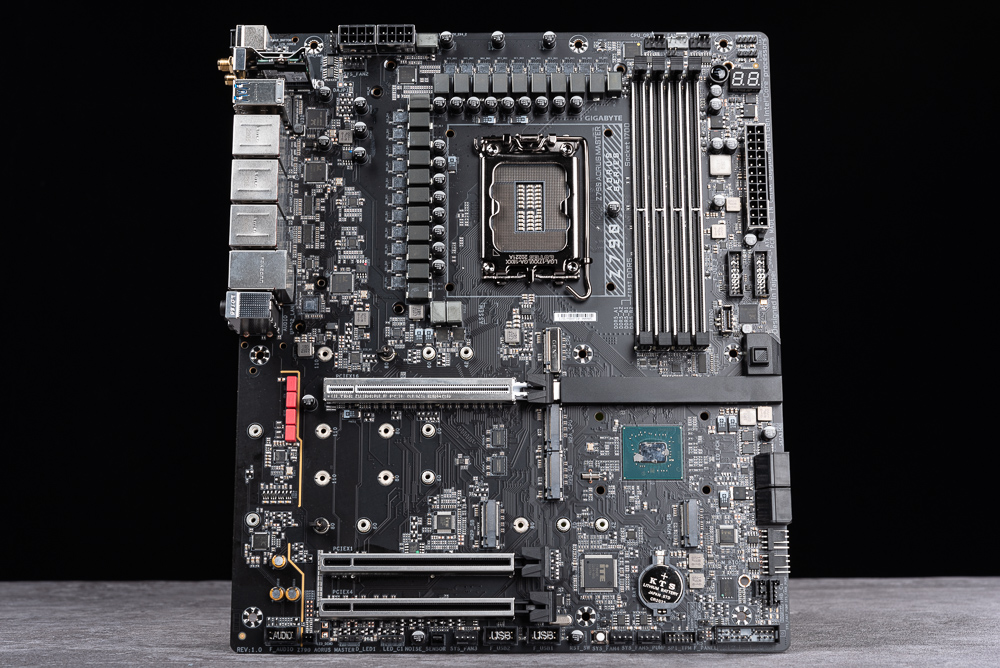
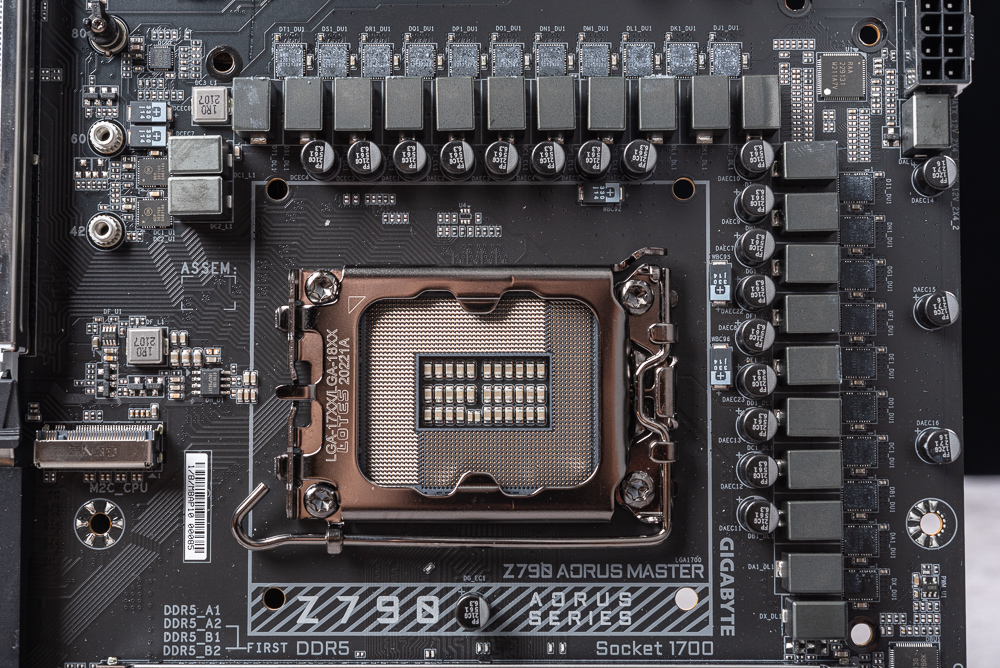
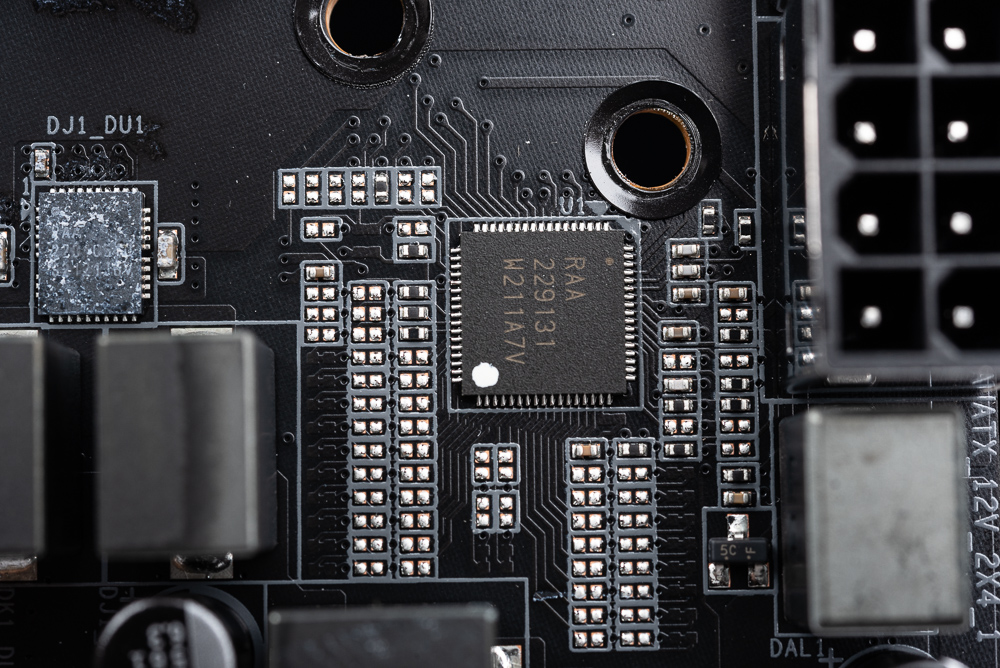
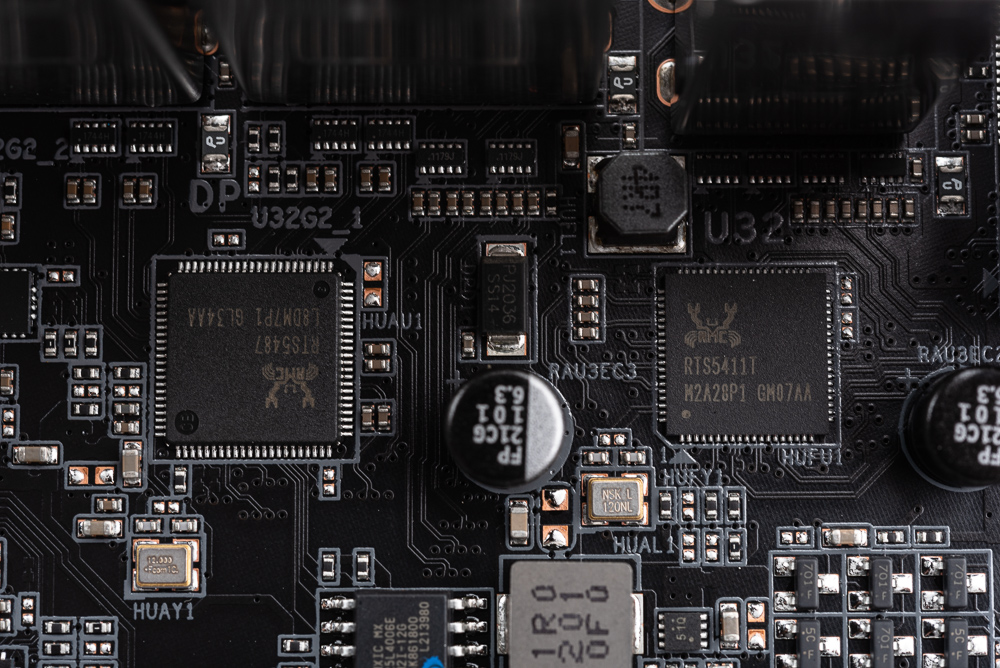
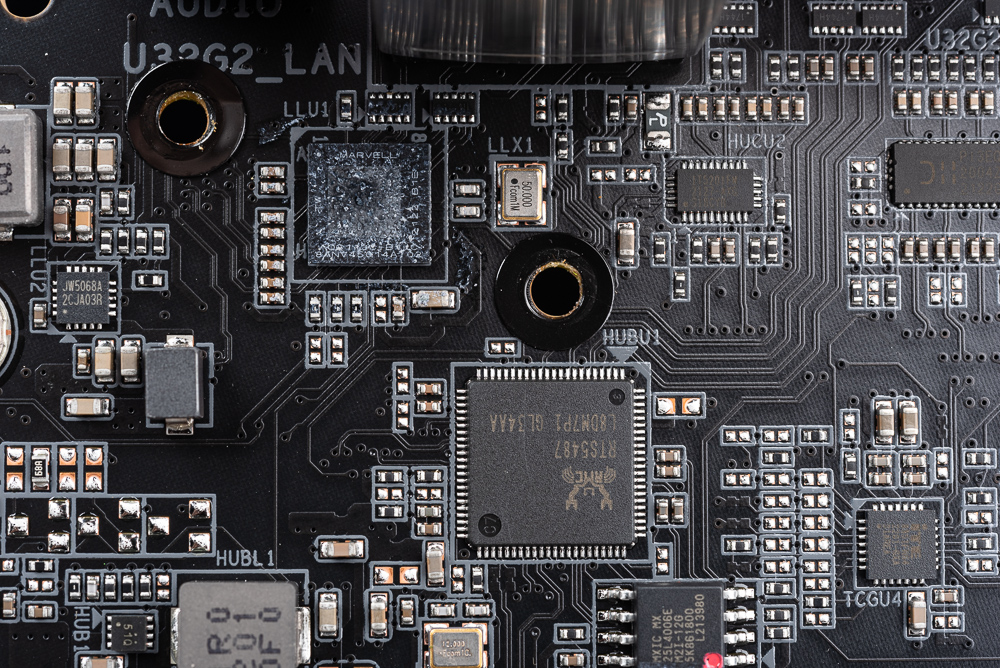
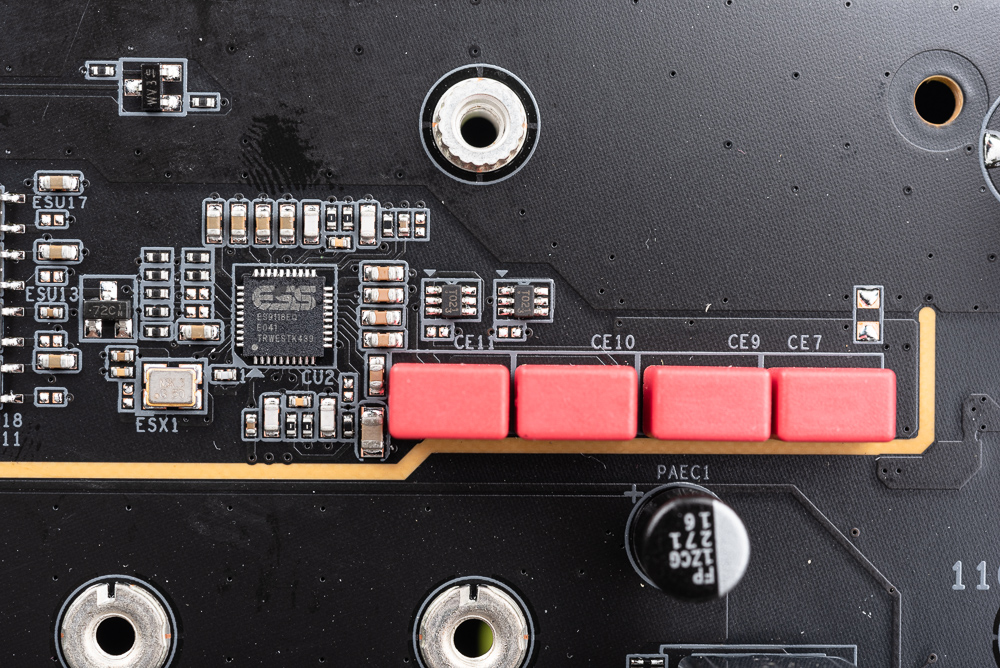
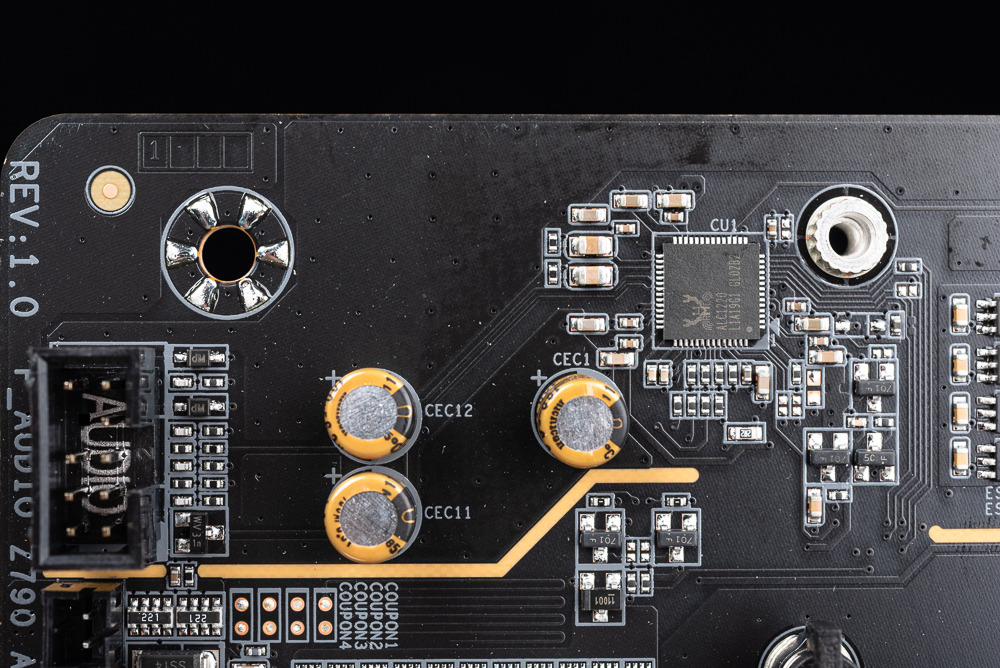
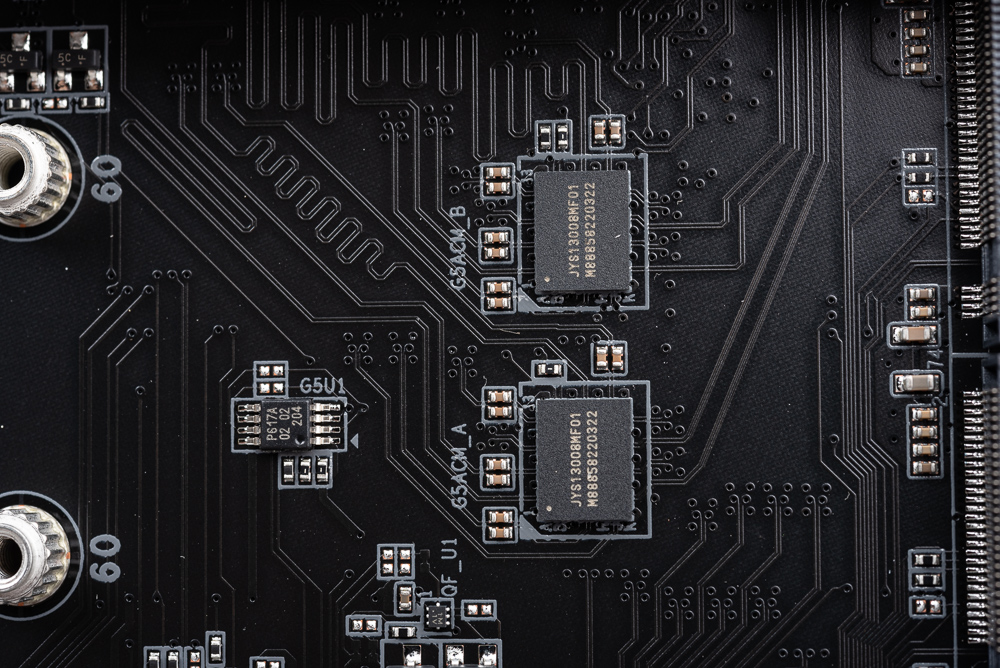
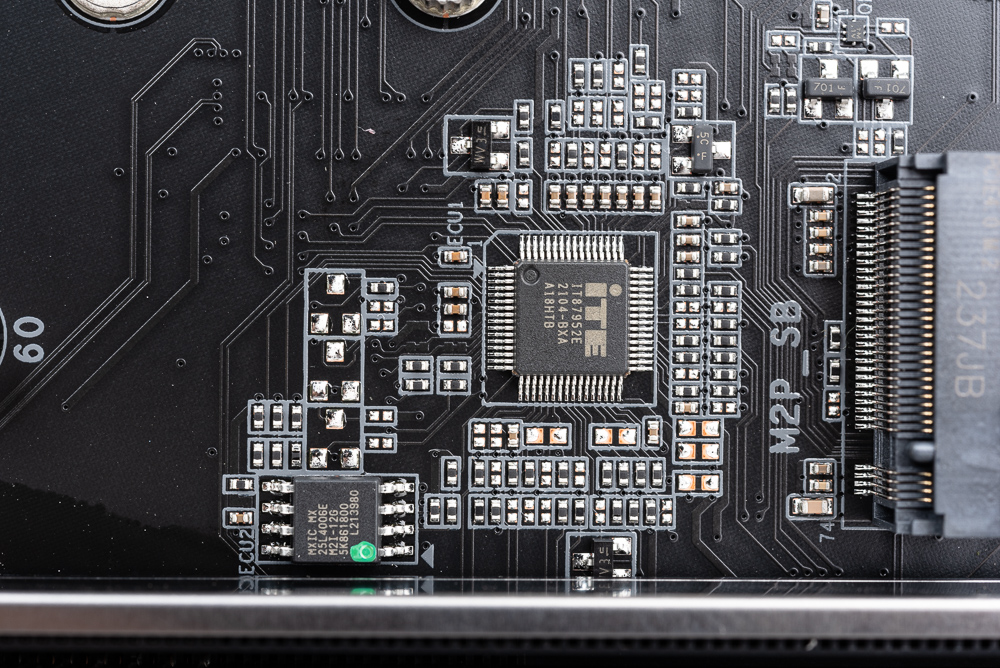
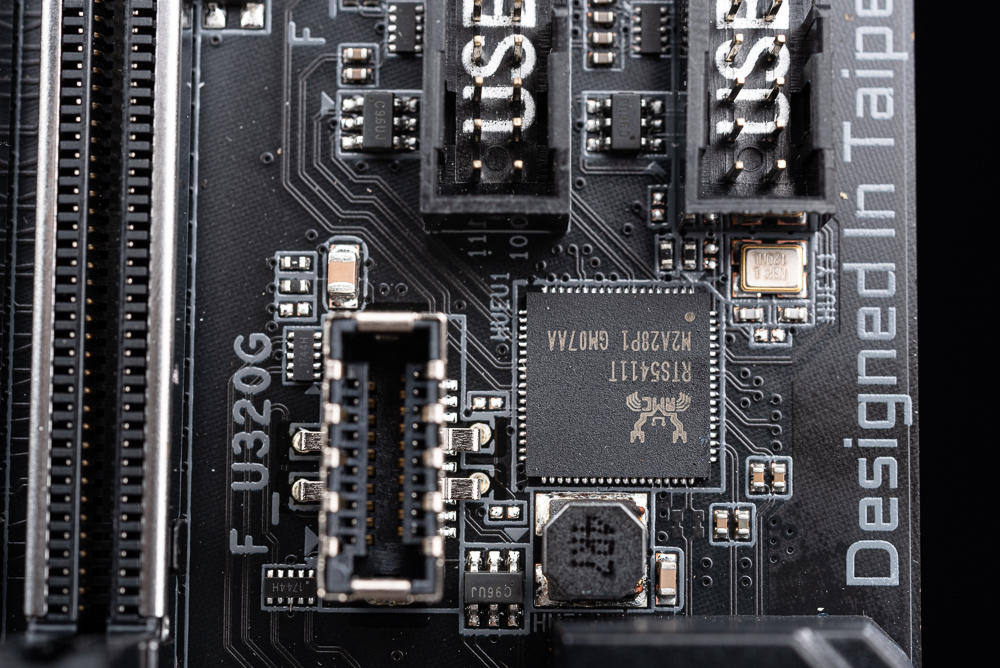
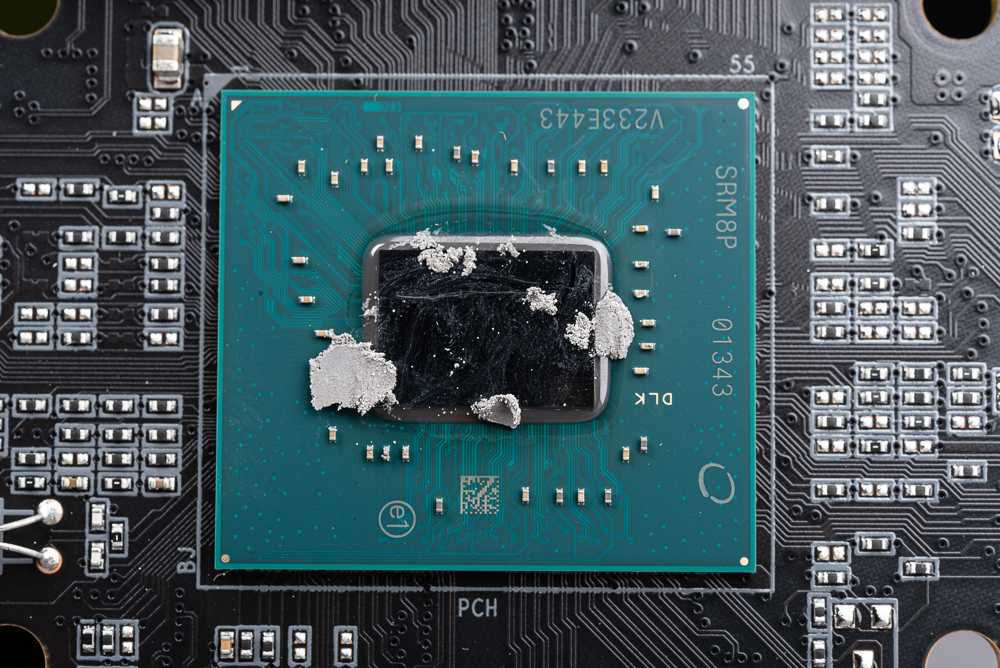
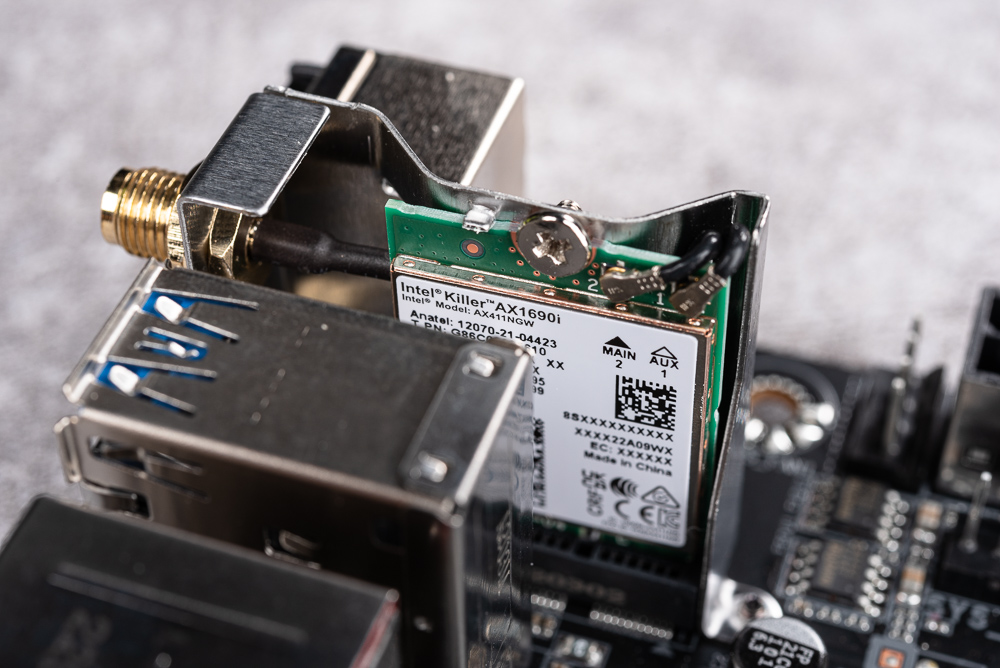
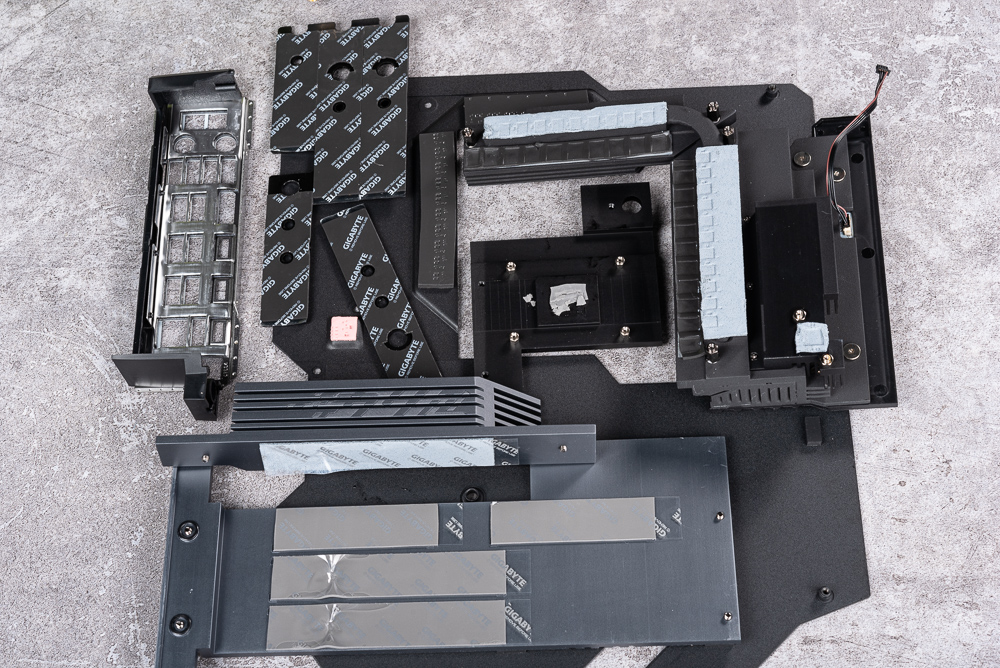
GIGABYTE Z790 AORUS MASTER Accessories/Temperature and Noise Detection Cable
The motherboard accessories include manuals, stickers, antennas, SATA cables, RGB cables, temperature measurement cables, noise cables, etc.
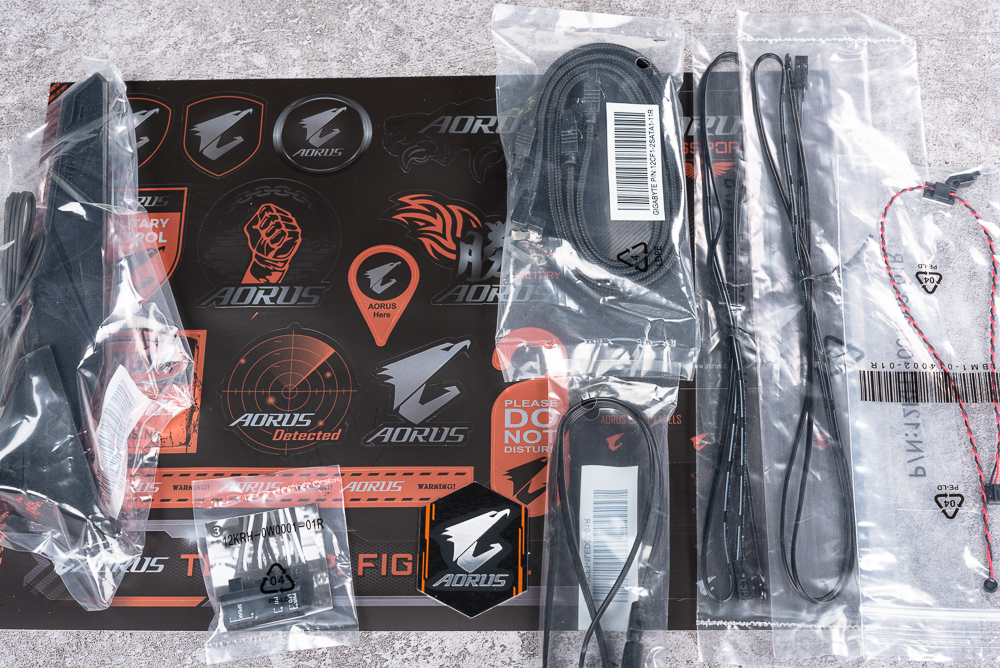
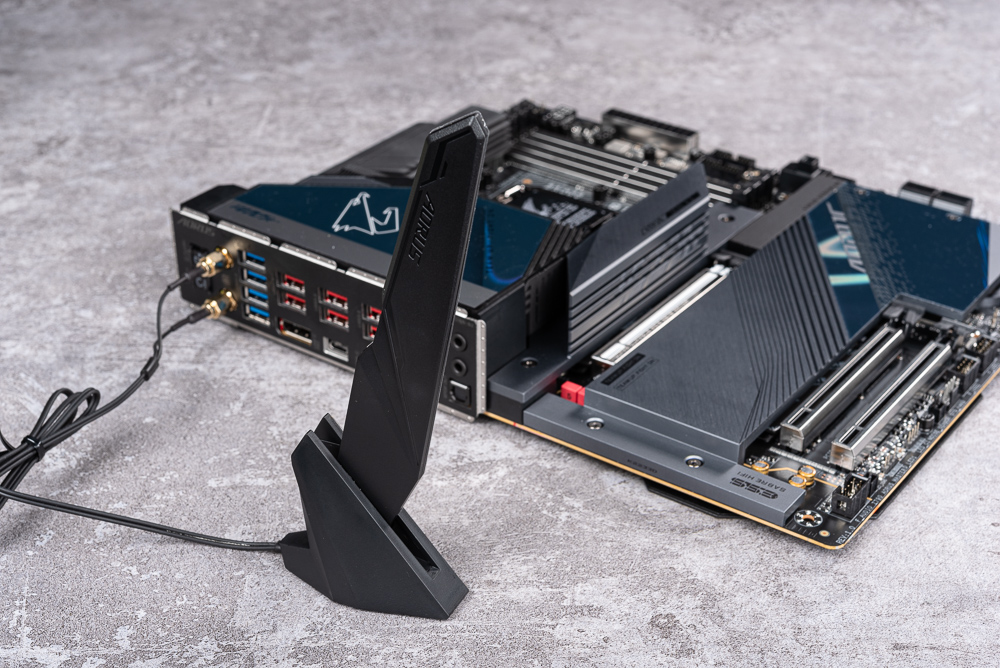
After connecting the noise line, the noise value in the cabinet can be monitored by software measurement.
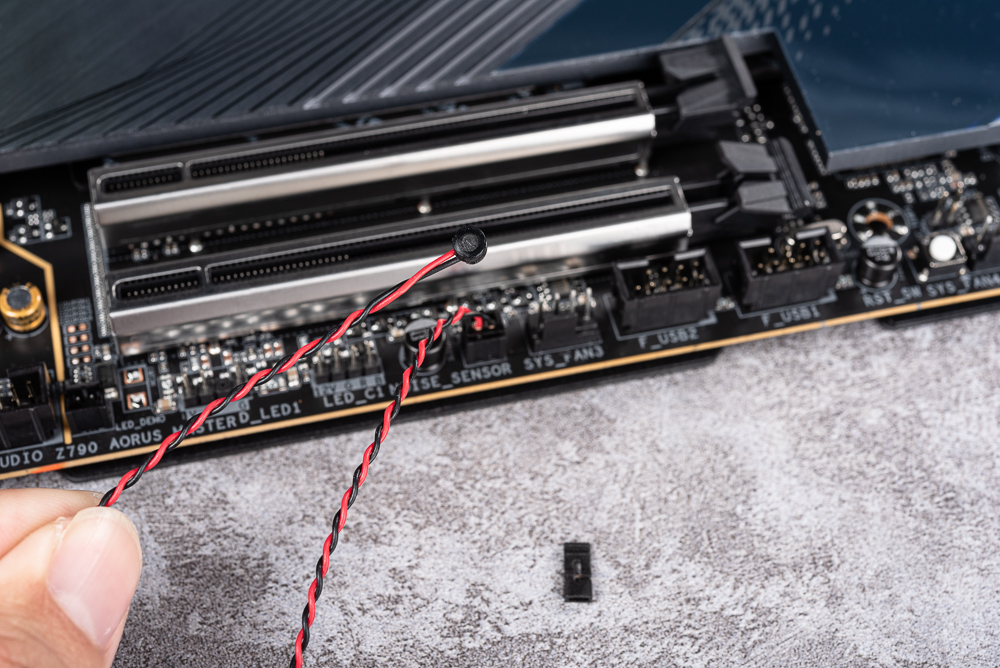
The temperature line can be used to measure the inside of the casing or the position where you want to measure the temperature, just stick the line on the surface of the measuring point.
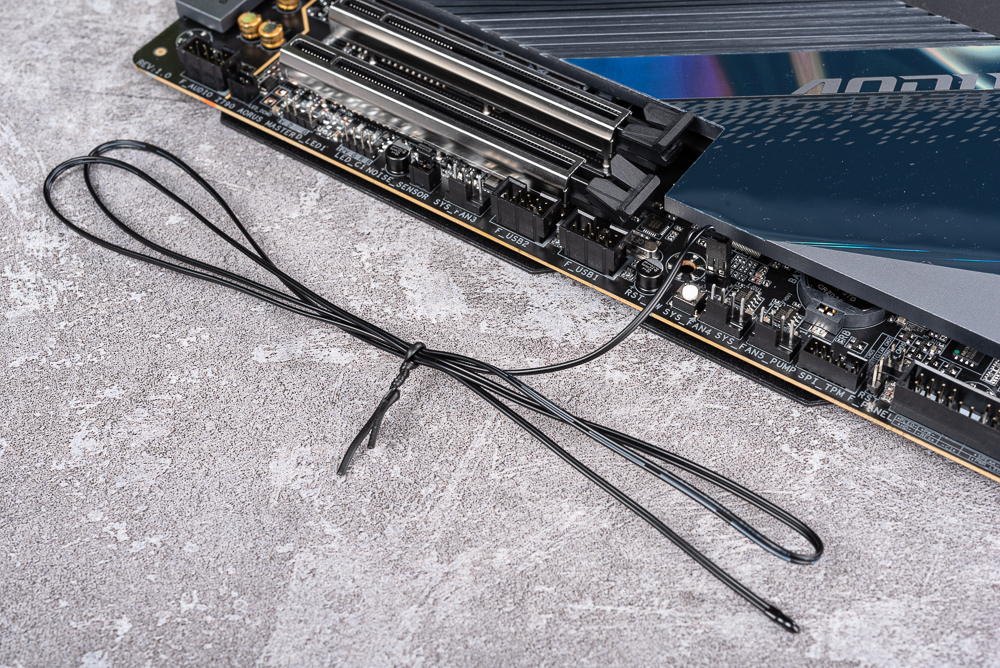
GIGABYTE Z790 AORUS MASTER BIOS function / CPU Upgrade
Z790 AORUS MASTER BIOS, provides CPU Upgrade option in Tweak overclocking page, players can adjust the default settings such as Max Performance +1, Gaming automatically closes E-Core; and has enhanced multi-core performance options.
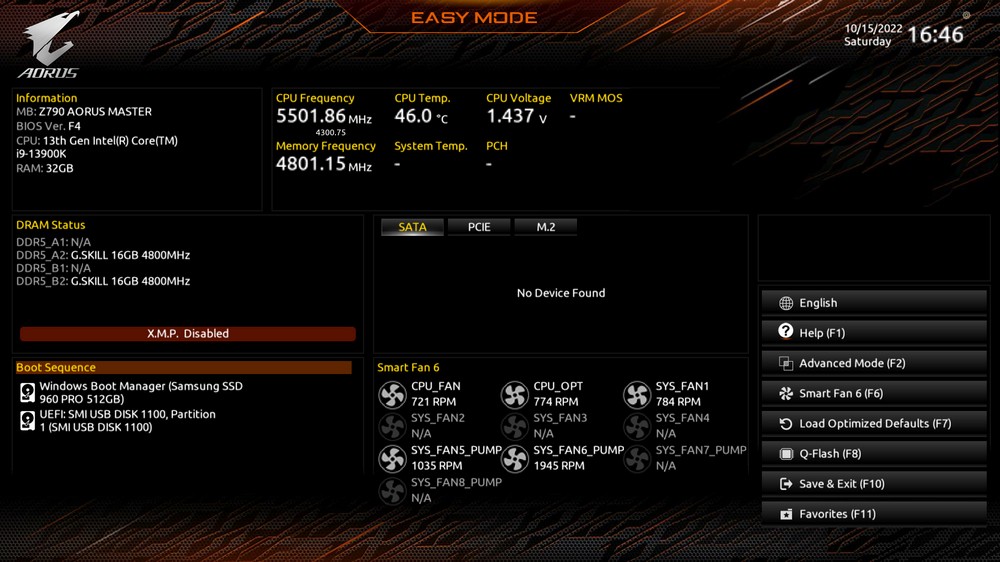
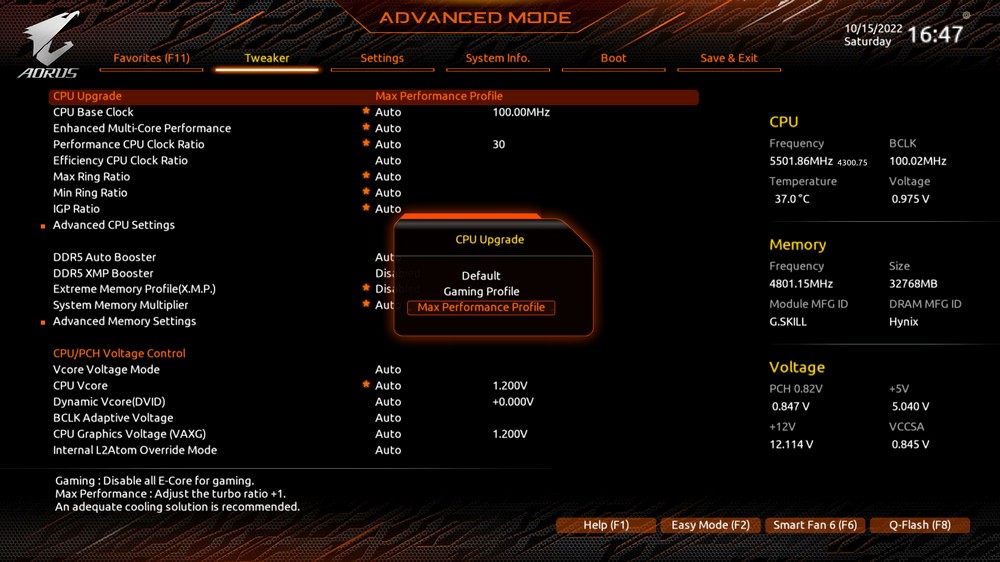
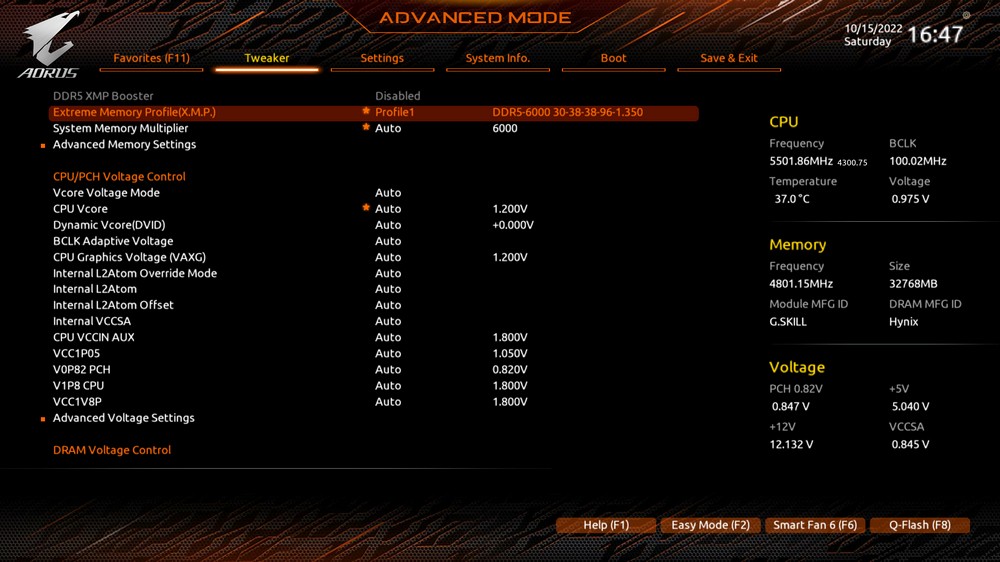
In the built-in device settings, you can enable the Re-Size BAR function, and adjust the LED and other settings. The peripheral settings include lighting effects and RST_SW (MultiKey) function settings.
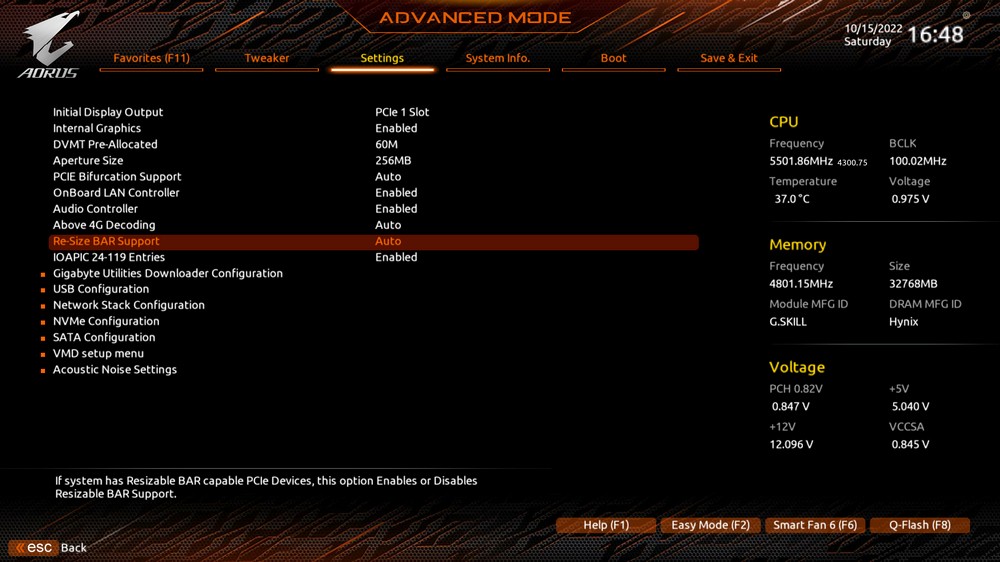
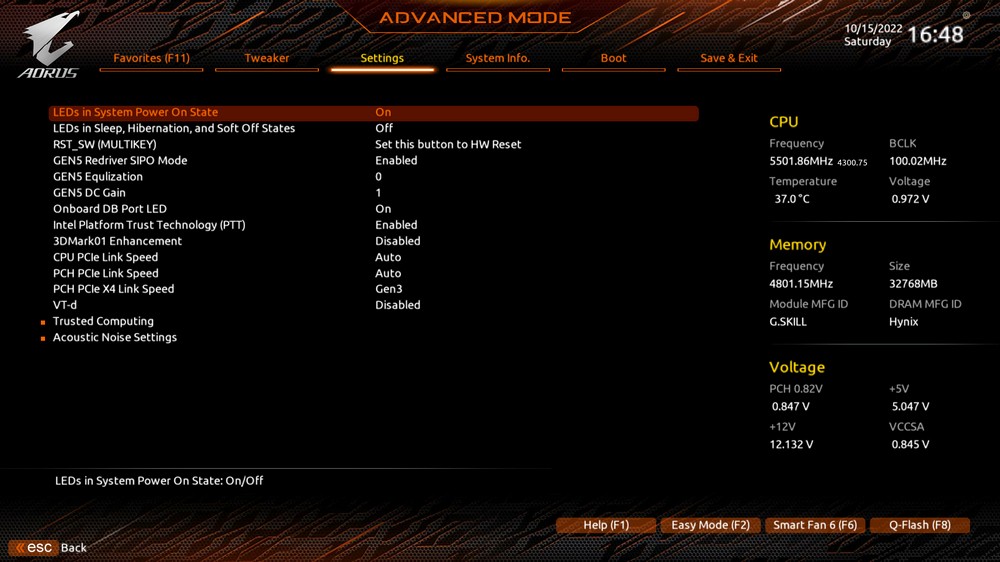
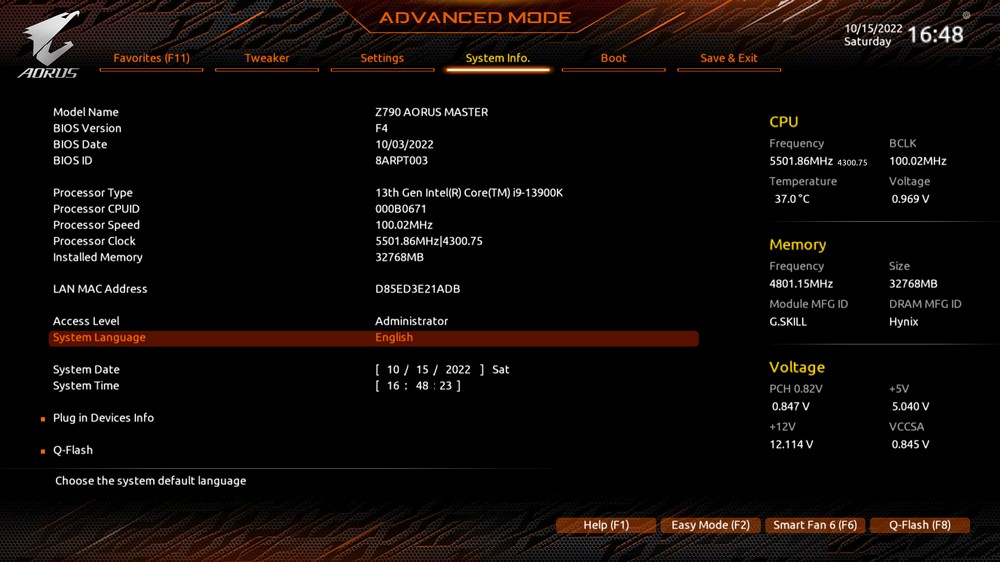
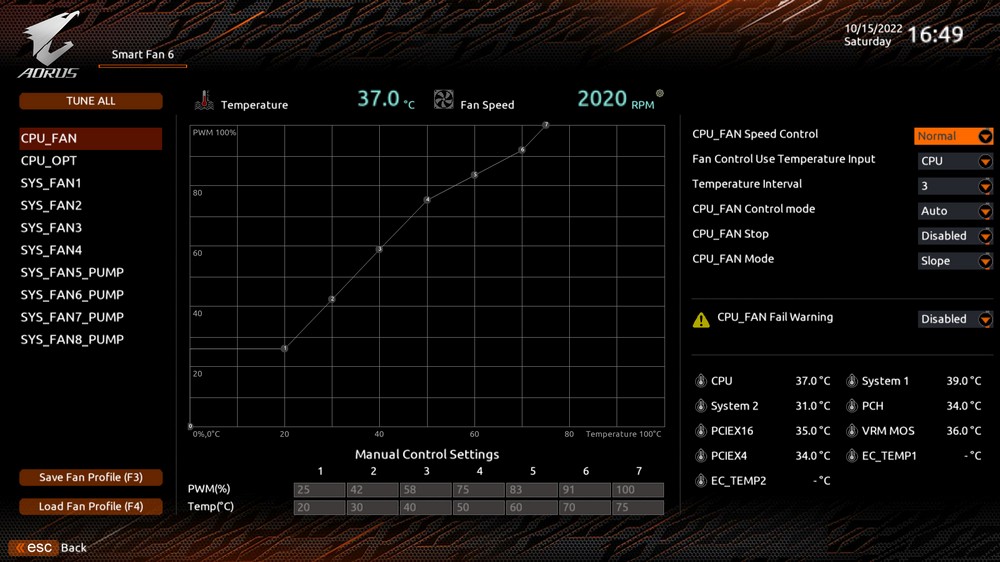
GIGABYTE CONTROL CENTER Software Integration / RGB Fusion, FAN Control
After the computer is installed and the system is turned on for the first time, it will ask if you want to install the GIGABYTE CONTROL CENTER (GCC). The software includes RGB Fusion, FAN Control, and performance control, as well as driver installation and other functions, a set of software that can meet the basic computer control functions of players. (It’s just that the complete monitoring function of the previous SIV has not been ported to GCC.)
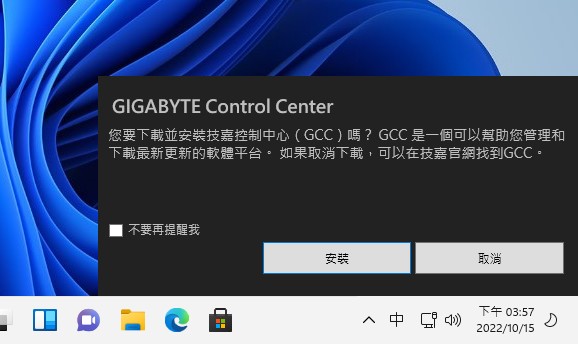
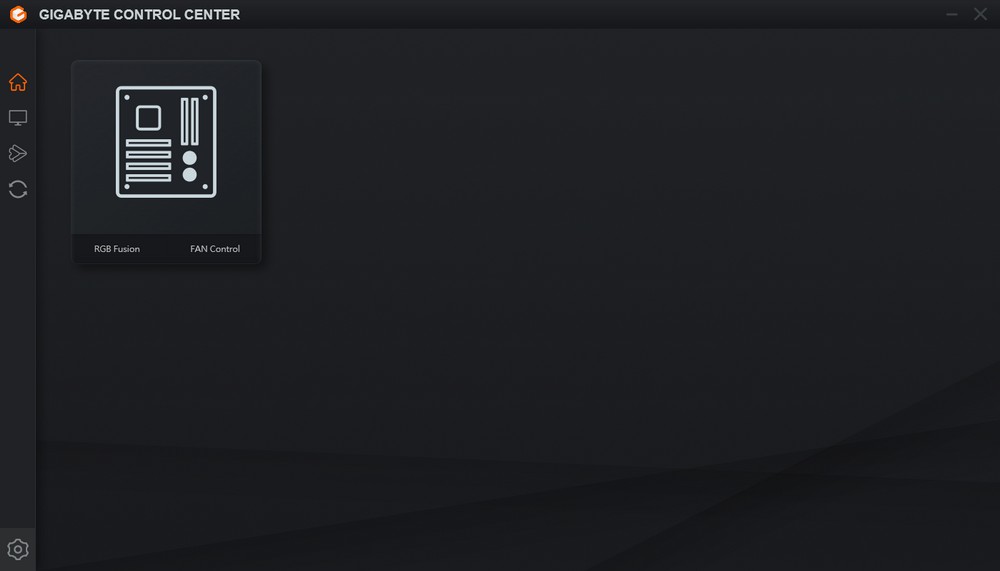
On the RGB Fusion page, you can control the lighting effect, color, and brightness of the motherboard’s lighting effects and RGB ports.
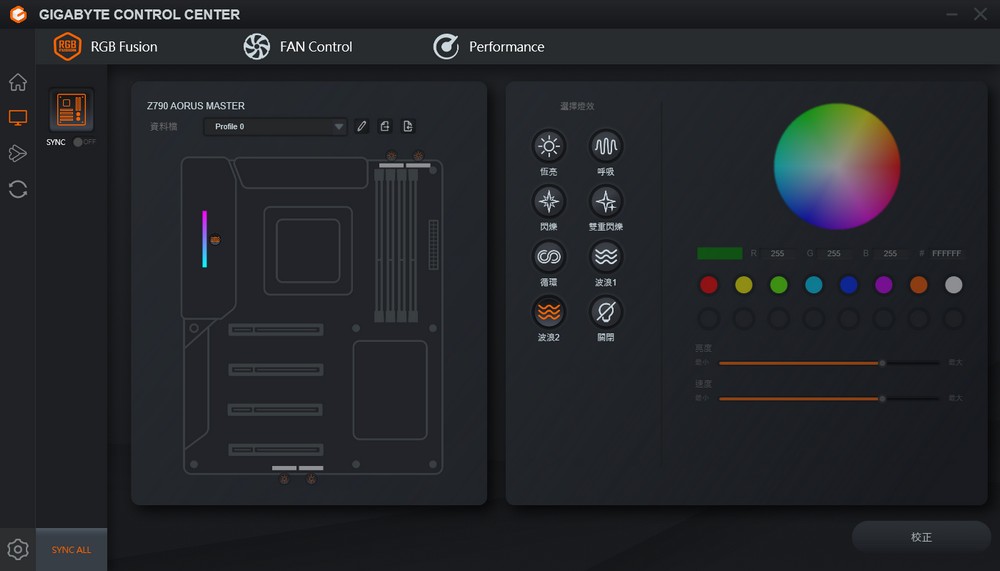
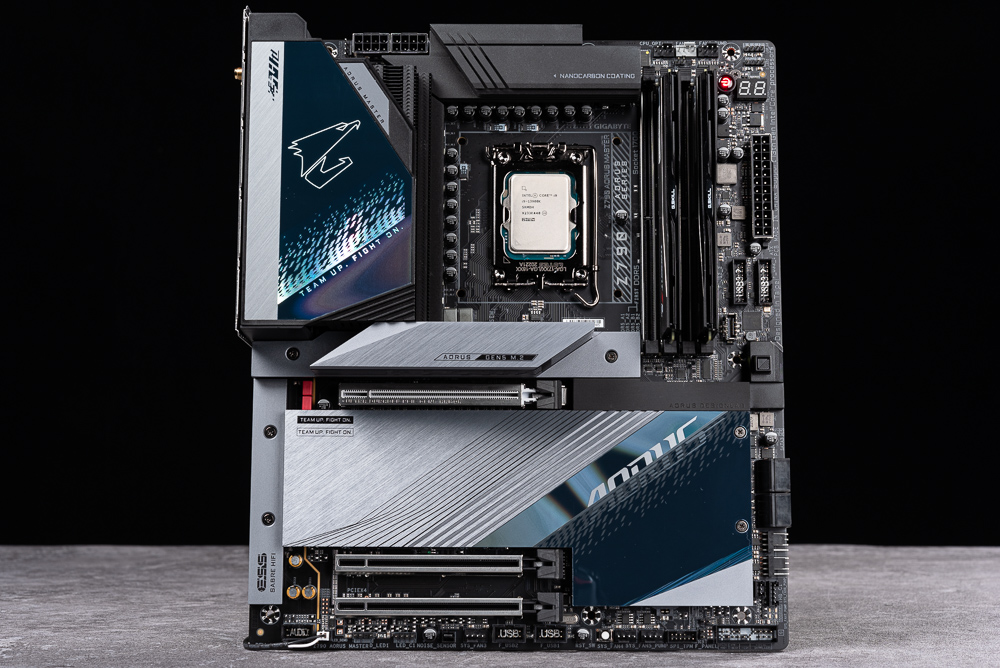
Fan Control can adjust linear curve or stepped fan speed curve control for each fan.
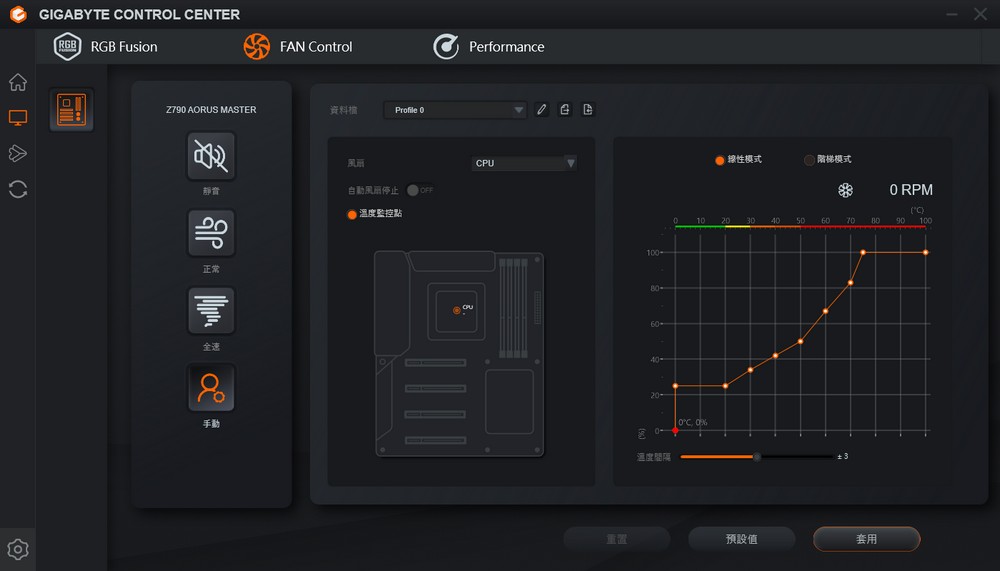
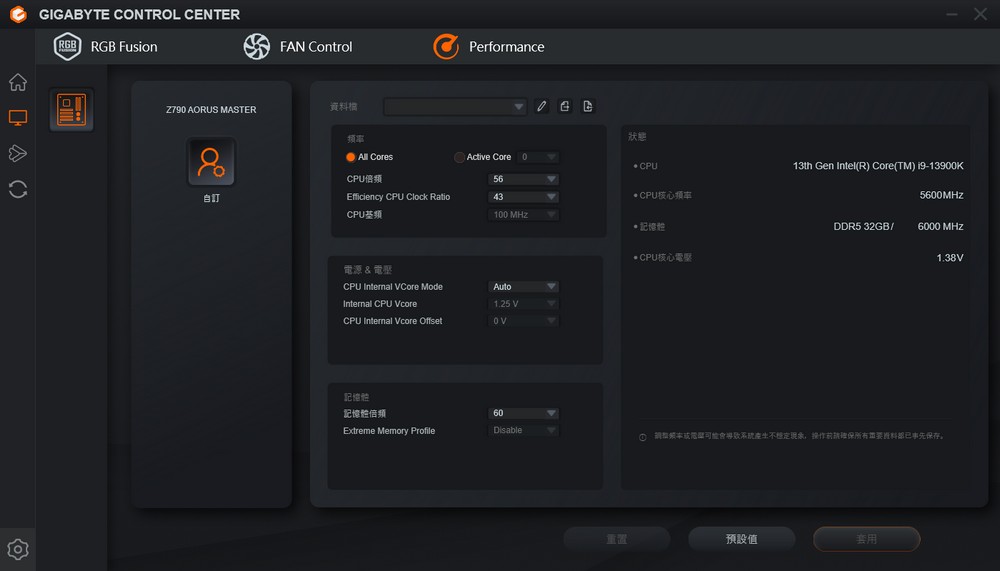
Of course, GCC also provides a complete driver update function, which is quite convenient for installing a computer for the first time.
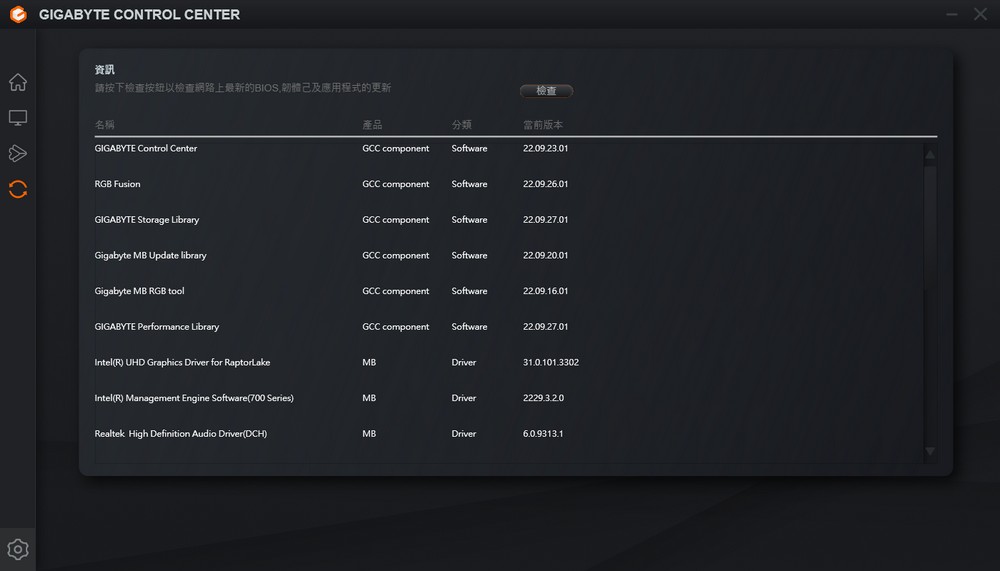
GIGABYTE Z790 AORUS MASTER motherboard performance test
In terms of performance testing, several common sets of CPU rendering, computer performance testing, and game performance are used for testing. The processor uses Intel Core i9-13900K, G.SKILL TRIDENT Z5 NEO DDR5-6000 16GBx2, and NVIDIA GeForce RTX 3080 Ti, the settings use the motherboard CPU Upgrade Max Performance, the EXPO function is turned on, and the radiator uses 360mm AIO water cooling, the following scores Provided for your reference.
Test Platform
Processor: Intel Core i9-13900K
Motherboard: GIGABYTE Z790 AORUS MASTER
Memory: G.SKILL TRIDENT Z5 NEO DDR5-6000 16GBx2
Graphics Card: NVIDIA GeForce RTX 3080 Ti
System Disk: Samsung NVMe SSD 960 PRO M.2
Cooling Device: 360mm AIO water cooling
Power supply: Seasonic PRIME PX-1000
Operating system: Windows 11 Pro 21H2
CPU-Z View Intel Core i9-13900K processor information, codenamed Raptor Lake Intel 7 10nm process 8+16 core 32 thread processing The device is tested with Z790 AORUS MASTER motherboard, the BIOS has been updated to F4, and the memory is dual-channel DDR5 16GBx2 6000MHz.
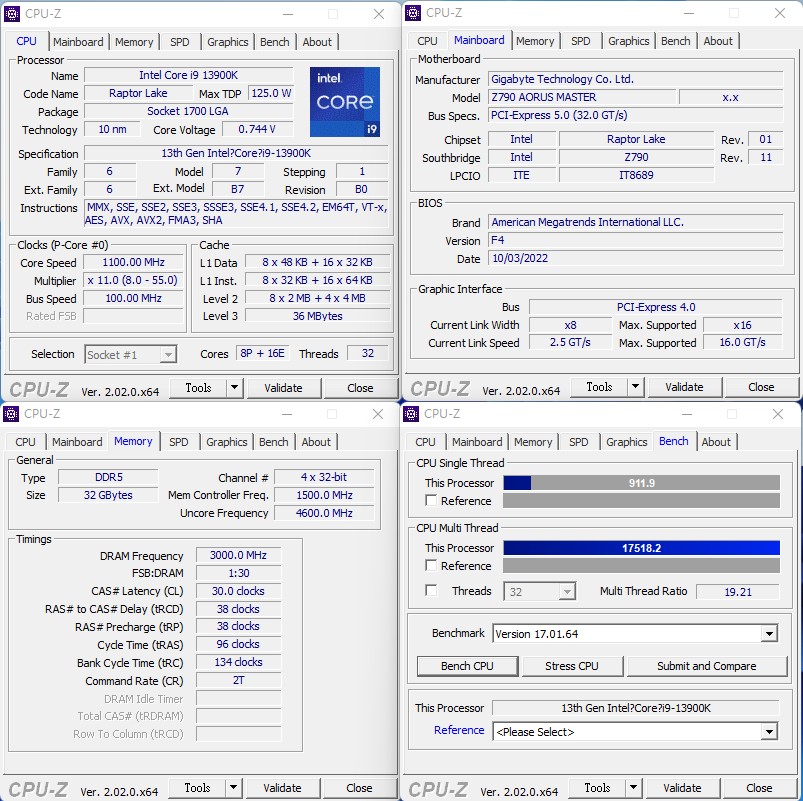
CINEBENCH R20 and R23Developed by MAXON based on Cinema 4D, it can be used to evaluate the 3D graphics performance of computer processors. It is also a common test software currently used to evaluate CPU computing performance.
The i9-13900K can achieve a CPU score of 15885 pts in the R20 version test, and the R23 version also has a CPU score of 41713 pts; the single-core performance has a performance of 850 pts and 2210 pts, respectively.
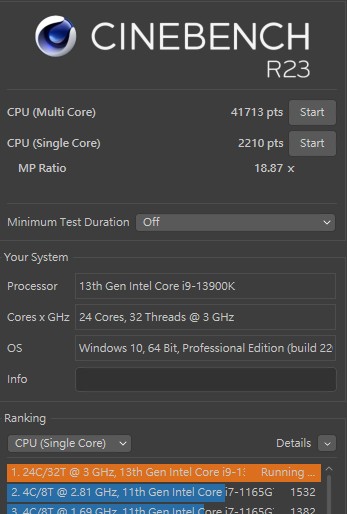
AIDA64 memory and cache test, memory uses G.SKILL TRIDENT Z5 NEO DDR5-6000 16GBx2, with Z790 AORUS MASTER have memory read 95860 MB/s, write 84044 MB/s, copy 86625 MB/s, delay 69.4 ns performance.
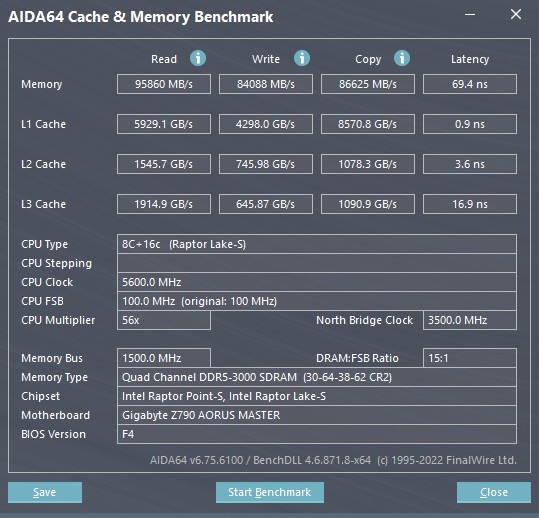
The overall computer performance test is conducted with PCMark 10, which can be used to score basic computer tasks such as App startup speed, video conferencing, and web browsing performance, while the Productivity test uses spreadsheets and paperwork as test items. As for Digital Content Creation, video content creation is based on photo/video editing and rendering, and visualization.
The i9-13900K with RTX 3080 Ti scored 9,832 points, the computer benchmark performance Essentials has 12,513 points, and productivity has 11,408 points. In digital content creation that requires more CPU operations, it achieved a high score of 18,066 points; the recorded data shows that the CPU time during the test is 18,066 points. The maximum pulse reaches 5.6GHz.
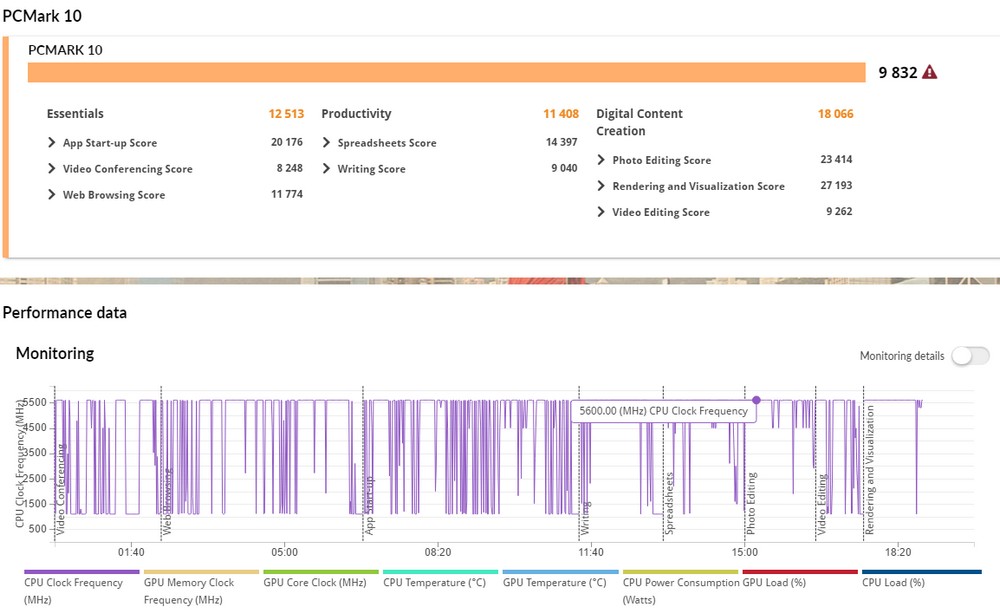
Cross-platform computer performance testing tool CrossMark, a free testing tool developed by BAPCo, supports platforms such as Windows, iOS/iPadOS, macOS, and Android, and is aimed at computer productivity, such as text editing, spreadsheets, web browsing, and creative photo editing, organizing Work with video editing, etc., plus test computer responsiveness.
The i9-13900K achieved a total score of 2507 points, Productivity productivity of 2228 points, Creativity creation of 2944 points, and Responsiveness of 2207 points of high performance.
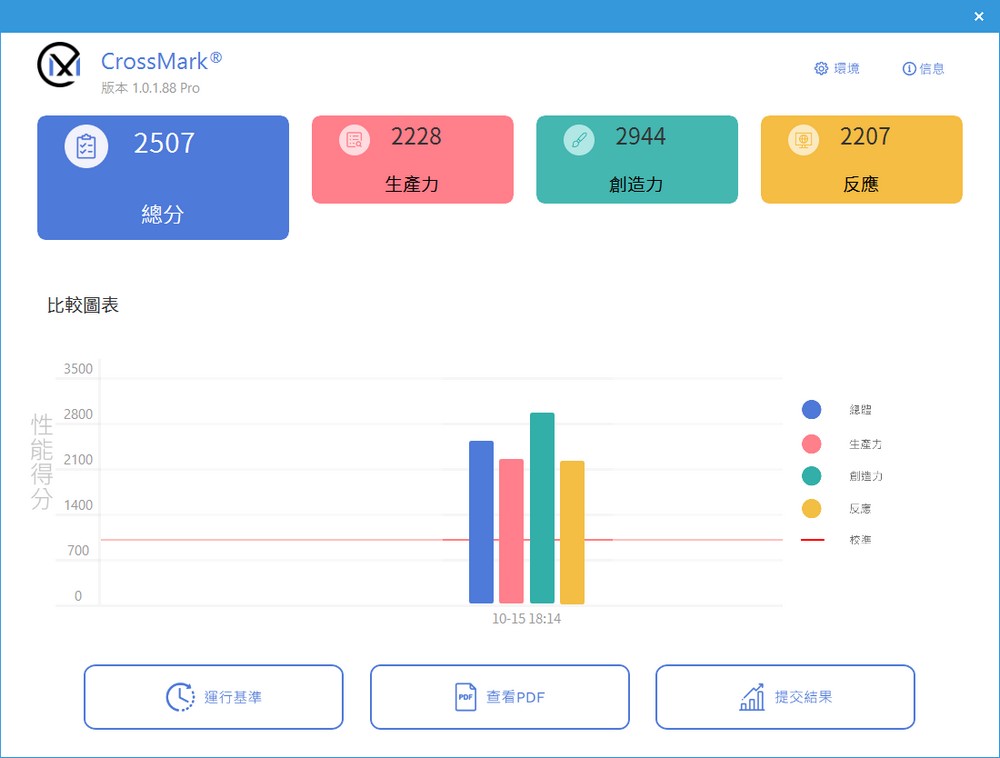
3DMark CPU Profile is a test designed for the processor. It mainly tests the physical operation and custom simulation of the CPU and tests the performance of the processor at 1, 2, 4, 8, 16, and the maximum thread. So there will be different thread tests because the number of threads used by different applications and games is different.
For example, the Max threads test can show the maximum performance of the CPU, but this does not mean that the game can also play the same performance, only movie-level rendering, simulation or scientific analysis applications will use the performance of full threads; in the same way, 16 threads also have a good performance for computing and digital content creation and has little impact on games.
The i9-13900K Max threads can reach a score of 16946, which meets the needs of movie-level rendering, simulation, or scientific analysis applications, while the main game is 8782 points for 8 threads and 4621 points for 4 threads.
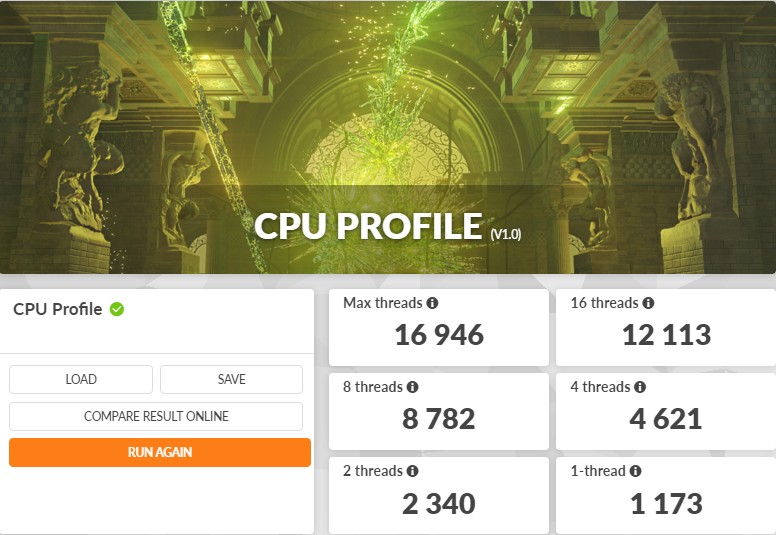
3DMark Fire StrikeThe test uses the RTX 3080 Ti graphics card, and its CPU physical physics score has 60178 points; for the Time Spy test designed for DirectX 12, the CPU scored 24399 points.
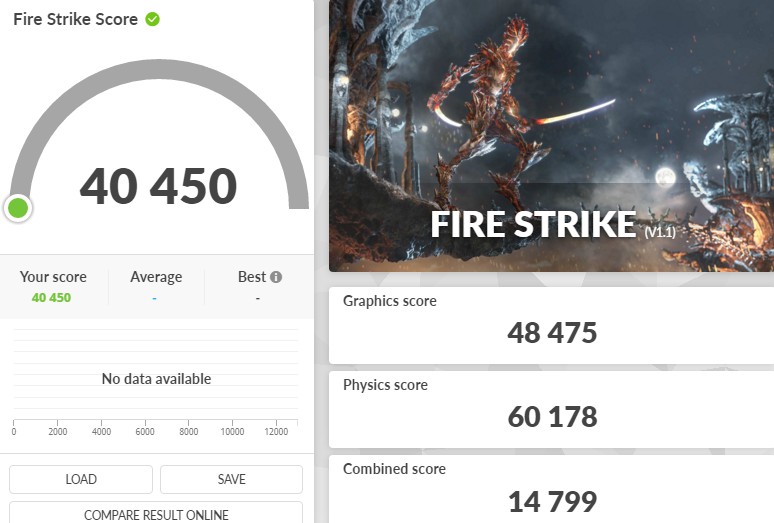
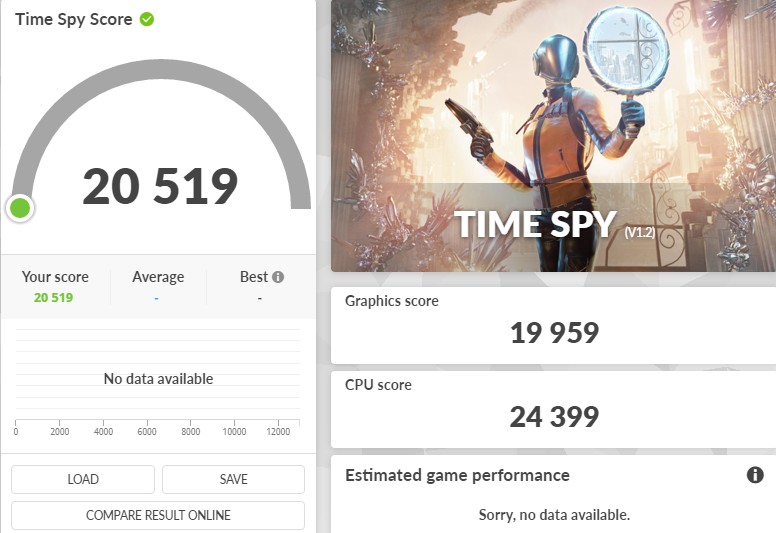
Z790 AORUS MASTER provides up to 3 USB 3.2 Gen 2×2 ports, testing USB 20Gbps SSD using ASM3242 controller, it can achieve sequential read and write performance of 1815.82 MB/s, 2013.09 MB/s USB 20Gbps.
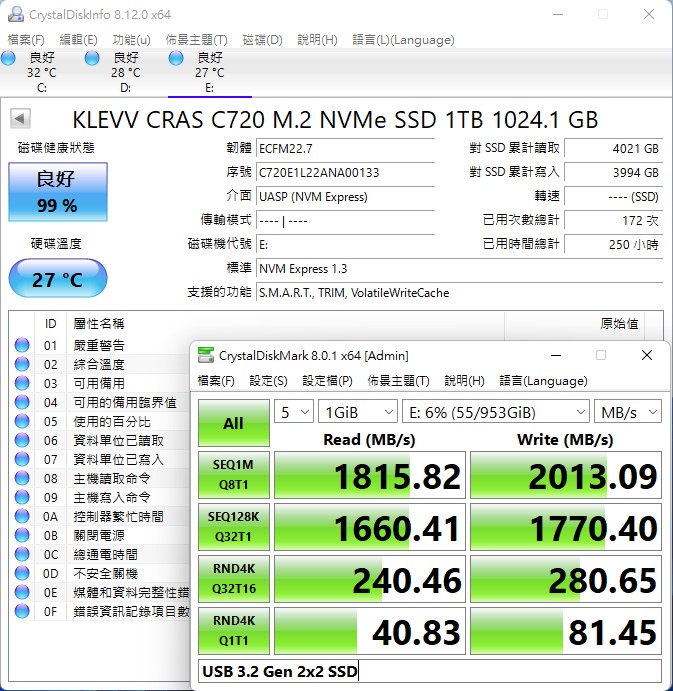
To sum up
The GIGABYTE Z790 AORUS MASTER inherits the condor style of the Z690. With a small upgrade in specifications, it brings complete PCIe 5.0 support, including the PCIe 5.0 x8 of the graphics card and the PCIe 5.0 x4 channel required for the SSD. Players have new choices, but because the Intel processor PCIe 5.0 channel segmentation can only be x8/x8, this can only be the case.
The Z790 AORUS MASTER specification has been upgraded to the flagship E-ATX large board, direct digital 20+1+2 phase 105A Power Stage power supply, and 8-layer PCB board, as well as crazy full motherboard cooling capacity, heat pipe composite cooling fins, Bringing stronger passive cooling effect, from VRM to M.2 and PCH, all the hot places have heat dissipation design.
Either the Z690 or the Z790 AORUS MASTER can meet the power supply and overclocking requirements of the i9-13900K, as well as the I/O expansion specifications for high-end gamers. When the difference between the two is small, it depends on whether the player wants to budget first (Z690) or one shot (Z790). This choice is left to the player to decide.
If this article is helpful for you, please share this article with your friends on social media. Thank you!!
This article is based on the personality of the reviews. You are responsible for fact-checking if the contents are not facts or accurate.
Title: GIGABYTE Z790 AORUS MASTER Out-of-Box Test / Dual PCIe 5.0 Support, 5* M.2 Upgrade Board Review